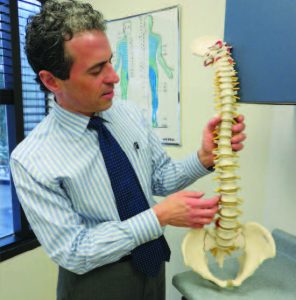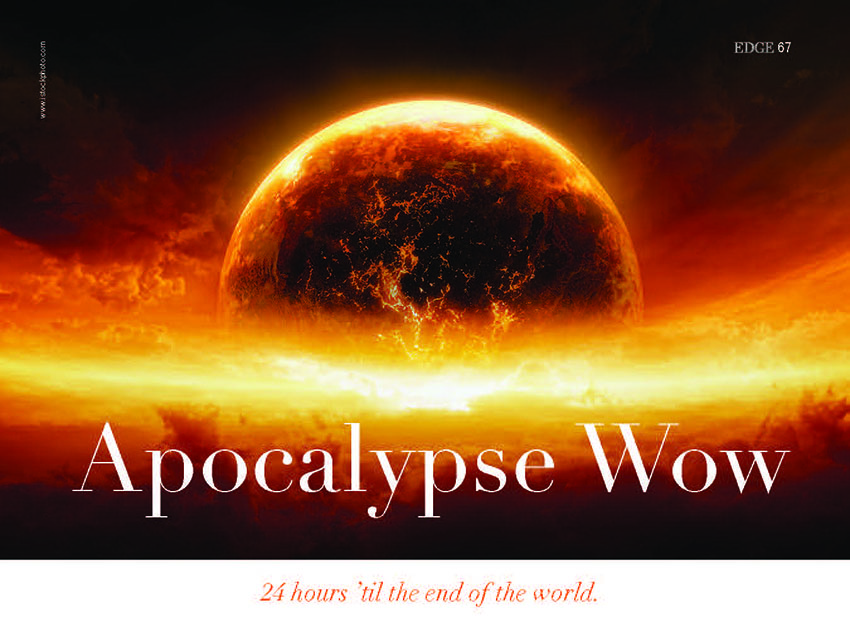 CARE-FULLY READY
CARE-FULLY READY
75 women and 13 men in the January Class of Trinitas School of Nursing completed their nursing and Associate in Science program earlier this year. With graduates from Central and Northern New Jersey, Brooklyn, New York City, and Staten Island, the class was 8 shy of the school’s record-breaking class of 96 in January 2013.
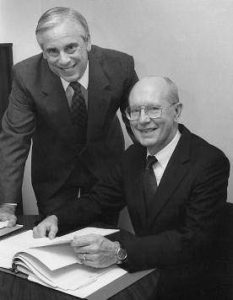 VISIONARY HOSPITAL ADMINISTRATOR LEAVES IMPRESSIVE LEGACY
VISIONARY HOSPITAL ADMINISTRATOR LEAVES IMPRESSIVE LEGACY
Trinitas mourns the passing earlier this year of George F. Billington, former president and CEO of Elizabeth General Medical Center (1963-1991). Billington (seated) is pictured with his successor, David A. Fletcher, who served in that role at EGMC from 1991-2000. Fletcher then became the first President/CEO of Trinitas from 2000-2001. The steps leading up to the creation of Trinitas in 2000 were set in motion one decade earlier when Billington accomplished EGMC’s acquisition of Alexian Brothers Hospital which now serves as the Trinitas New Point Campus.
 PAGE TURNERS
PAGE TURNERS
Barnes & Noble Booksellers in Springfield has set children on a lifetime of reading enjoyment through its role in the Reach Out and Read (ROAR) program at Trinitas’ Pediatric Health Center. Book donations have reached children like 14-month old Ashley of Elizabeth, shown with Theresa Andrews, Clinical Coordinator of the Pediatric Health Center; her mother Maria Alfaro, and Veronica Vargas, Community Business Development Manager at Barnes & Noble.
 SHARED VISION
SHARED VISION
The Trinitas Women, Infants and Children (WIC) Center hosted a world hunger awareness event to support World Vision humanitarian efforts in Haiti. The event was dedicated to the memory of WIC staff member Erva Williams, an advocate of families and children who WIC serves.
 HITTING THE PAVEMENT
HITTING THE PAVEMENT
Walkers from Trinitas, the City of Elizabeth’s Health and Human Services Department, and the Eastern Union County YMCA enjoyed National Walking Day under sunny skies earlier this year. All enjoyed the brisk walk along the Elizabeth River Trail to promote walking as part of a healthy lifestyle. Trinitas employees at the New Point Campus in Elizabeth and the Finance offices in Cranford also participated.
 LIFE SAVING MESSAGE
LIFE SAVING MESSAGE
As guests on Mayor J. Christian Bollwage’s weekly cable show “Our City,” Debbie Durand, Clinical Coordinator, Trinitas Intensive Care Unit (left), and Jackie Lue Raia, Ass’t. Dir. of Resource Development at the NJ Sharing Network (center), discussed the importance of patients and their families giving serious thought to organ donation as a life-saving/life enhancing gift. Both women described the activities of Trinitas and the NJ Sharing Network that promote organ and tissue donation and advocate for those on organ transplant lists.
 HEAD OF THE CLASS
HEAD OF THE CLASS
Rose Santee, Associate Dean of the Trinitas School of Nurs-ing, is serving a three-year term through 2017 as a member of the Board of Commissioners of the National League for Nursing’s (NLN) Commission for Nursing Education Accreditation (CNEA).
Rose was one of the first educators nationally to obtain the certified nurse educator credential (CNE) from the National League for Nursing (NLN) in 2005. With more than 30 years experience in nursing education as a faculty member and as an educational administrator, Rose has been instrumental in advocating excellence in nursing education.
 PAYING IT FORWARD
PAYING IT FORWARD
Roselle Park resident Mary Jo Daniel and Maritza Pineda of Elizabeth share a common bond as cancer survivors. In appreciation of the caring staff at the Center, Daniel paid it forward and gifted a “31” brand bag filled with comforting items to Pineda. It proved to be a small gesture with huge impact.
A green landscaping strategy demands planning and perseverance.
In today’s culture of heightened environmental awareness, our gardens, yards and other outdoor living spaces not only have to look good, they have to make us feel good, literally and figuratively. Calling a lawn or landscape “green” doesn’t necessarily make it so, just as calling food “organic” doesn’t guarantee that it is. The quest for personal landscape perfection traditionally focused on irrigation, pesticides, weed control and maintenance, all weighed against the various associated costs.

www.istockphoto.com
Now, however, more and more New Jersey homeowners are raising the bar and demanding that their landscape design gives back more than meets the eye. Not only do we seek healthy and hardy plants, we want our outdoor living spaces to help keep us healthy and happy. Professional landscapers are being asked to apply holistic principles in designing both softscape plantings and hardscape elements, such as fire pits and places, outdoor kitchens, and child- and animal-friendly zones.
In a modern context, the key to successful landscaping lies in sustainability. To get the most from an often-sizeable investment, homeowners look for a landscape design that is low-maintenance, drought tolerant and filled with native specimens. It may also include edible, herb, and specialized flower gardens, cultivated for their health and healing qualities as well as their resiliency and eye appeal.
Growing in popularity, especially in urban areas, are container- and raised-bed gardens that offer complete control over soil conditions. For city dwellers, options include roof gardens and living walls. There also are bee gardens, which focus on pollen-rich planting to support bees, as well as gardens that cater to hummingbirds, butterflies, and certain bats that feed on flower nectar. Then there are special gardens that lend romance and mystery, such as a night garden featuring plants from the noctiflora group, which release their fragrances only after sundown. If aroma is a prime consideration, then a scented garden is the ideal.

www.istockphoto.com
The value of the vegetable garden should not be underestimated. Even the staid British Royal Botanic Gardens elevated this timeless genre by presenting a special event in 2013 called IncrEdible Edibles. Some gardeners have gone “beyond edible” to incorporate vineyards on their property to assure a supply of organic grapes for their wine cellars (and a possible agricultural tax exemption, as well).
Needless to say, there are certain practical elements that go into successful gardening. Every garden, for example, should be season-appropriate, with staggered blooming periods to assure the garden shows to best advantage throughout the year. In challenging cold-weather situations (such as New Jersey this past winter), consideration should be given to some architectonic elements, such as trees that present well even when leafless and snow-blanketed.
A $73 Billion Industry

www.istockphoto.com
Paul Martoccia points out another interesting aspect of the trend toward environmentally friendly landscape design. He runs Martoccia Landscape Services in Somerset County, a business started by his father in 1962. In the past 10 years, the company has completed 800 projects. Its typical client five years ago was age 50-65 and anticipating retirement, with women as the primary decision-makers. Today, the clientele is younger (late-30s to 40s, he says) with men and women on an equal footing about their landscaping expectations. Rather than the simple patio of 10-15 years ago, Martoccia adds, homeowners are interested in creating what he calls a “backyard destination.” These projects involve a lot of client interaction and site analysis—terms that were not exactly part of the landscaping lexicon back in the early ’60s.
All told, the annual price tag for landscaping in the U.S. is$73 billion. According to a 2014 Ibis World market research report, there are almost 400,000 U.S. companies with almost 900,000 employees. Companies range from small multi-generational father & son residential operations to billion-dollar commercial firms. Projections indicate that the biggest increase in consumer spending will be in the design/installation area. And within that growth sector is a rising demand for environmentally friendly designers.

www.istockphoto.com
So does that mean more companies are bringing aboard workers who understand how to create a healthy, sustainable outdoor space? According to Burke Honnold, owner of T. Burke Honnold Landscaping in Monmouth County, it does not. “Today, there are more landscape ‘designers’ with far less landscape education out there,” he says. Honnold’s greatest challenge, in fact, is hiring qualified help. He considers himself fortunate to have three core employees on board with a decade or more of experience.
GARDEN VARIETY
To start a… Look for…
Hummingbird Garden Flowering plants that are red in color and tubular in shape (e.g., Bee Balm or Cardinal Flower).
Butterfly Garden Tropical Sage, Butterfly Bushes, Phlox, Purple Coneflower, Zinnias, and Sedum.
Bat Garden As an organic pest control, they need shelter (trees and large shrubs), water features, and night-blooming flowers (e.g., Moonflower, Primrose, and Nicotania).
Moon or Night Garden Night-bloomers such as Moonflowers, Four-o-clocks, Angels’ Trumpets and even some grasses to add soothing swishing sound effects.
Healing Herb Garden Culinary: (Sage, Rosemary, Thyme, Mint)
Medicinal: (Motherwort, Passionflower, Echinacea, Wild Bergamot)
Aromatic: (Lavender to calm, Eucalyptus to invigorate)
Often, homeowners will engage a landscape architect to create an environmentally friendly outdoor area. The landscape architect’s credentials are relatively more rigorous, so it is not surprising that the fees are usually higher. That being said, the modern mission for both the landscape architect and landscape designer is much the same, and many landscaping companies tout their eco-consciousness in their company names (e.g., Keep It Green Landscaping in Bergen County and Landscape Aesthetics in Somerset County).
Recent statistics indicate 80 percent of Americans consider themselves to be environmentally conscientious when it comes to their private grounds. No surprise then that Feng Shui consultants have found new opportunities in our backyards. Laura Benko, who has taught design at the Pratt Institute and was recently named Best Feng Shui Consultant by New York magazine, applies her expertise to create a more meaningful outdoor environment. “Landscaping with Feng Shui principles allows for a deeper meaning and connection to your environment,” she says.

www.istockphoto.com
“It’s not just sustainable landscaping, but emotional sustainability too.”
Gone are the days when a rolling, weed-free, golf-course-quality lawn represented everyone’s suburban ideal. Back then, you hired a lawn service, installed a sprinkler system, planted a few geraniums, and assumed you were done. Homeowners today tend to have a more cultivated vision for their property, as well as a greater awareness and concern for the environment. Indeed, we may still peer over the fence and wonder why the grass is greener on our neighbor’s lawn. But now we are asking the right question: At what cost?
 INSIDE OUT
INSIDE OUT
Some relatively common plants offer a surprising array of cleansing and air-filtering attributes. They live outdoors in warm weather, but need to be moved indoors with the first chill.
Common Name
Aloe Vera Aloe Barbadensis
English Ivy Hedera Helix
Boston Fern Nephrolepsis Exaltata Bostoniensis
Gerbera Daisy Gerbera Jamesonii
Mums Chrysanthemum Morifolium
Peace Lily Spathiphyllum
Philodendron P. Cordatum
Weeping Fig Ficus Benjamina
Snake Plant Sansevieria Trifasciata
Editor’s Note: Chris Gibbs writes about a wide range of home- and wellness-related topics, and also edits EDGE’s It’s A Gift pages. Special thanks to the experts who contributed to this story, including Laura Benko (laurabenko.com), Paul Martoccia (njlandscaping.com) and Burke Honnold (honnoldlandscaping.com).
May I Take Your Order?
For many of us, the path to a healthier diet begins with those first timid forays into new ethnic dishes. In this regard, few if any states can match New Jersey for the number of dynamic ethnic populations, density of population, and number of restaurants. Which ethnic foods are the healthiest? In most lists created by nutritionists, the “winning” countries are Greece, Viet Nam, Japan and India. Greek food makes wonderful use of dark, leafy vegetables and other heart-healthy, cancer-fighting ingredients. However, a helping of spanakopita—which is something of a national dish—is only slightly healthier than a Wendy’s Baconator. Vietnamese food gets high marks for its use of water and broth for cooking instead of oil. Many of the basic ingredients in this cuisine have been used in alternative medicine for centuries. Japanese dishes (we’re not including sushi here) are also prepared in a healthy manner, including steaming and rapid wok frying. Their fruits and vegetables are remarkably high in antioxidants, vitamins and minerals. White rice and soy sauce are problematic staples for some. The aromatic spices commonly used in Indian cuisine—including cardamom, coriander, cinnamon, turmeric, ginger, cumin and various chilies—not only produce a distinctive palate, some have been shown to ward off cancer and possibly Alzheimer’s. Skip the fried appetizers on most Indian menus. Italian cuisine (which is practically its own level on the New Jersey food pyramid!) also gets high marks for its liberal use of tomatoes, olive oil, garlic, basil, oregano and parsley. Not so much for the cheese. No matter which region’s cuisine appeals to you, there is a simple way to get through the maze of food options out there, according to

Michelle Ali, RD
Director of Food and Nutrition, Trinitas Regional Medical Center 908.994.5396
Michelle Ali, RD, Director of Food and Nutrition at Trinitas. “Healthier eating and a healthier lifestyle go together like peas and carrots,” she points out. “Healthy eating means watching what you eat—especially foods that may be higher in sugar, sodium or fats.” Make it a priority to reduce portions and try to limit those foods to special occasions, she suggests, and consider walking or doing an extra 15 minutes on the treadmill to offset your dietary decisions.”
 Exercise in a Wrapper
Exercise in a Wrapper
The good folks at global food giant Nestle have been working for the better part of a decade on what one might be tempted to call “exercise in a wrapper.” According to an article in Chemistry & Biology, scientists in the company’s Swiss labs are beginning to understand how a compound called C13 can stimulate an enzyme in charge of regulating metabolism. It’s an important step in developing a way to mimic the fat-burning effect of exercise. The next step would be finding plants or fruits that contain C13, which might then lead to the creation of nutritional products that could actually help consumers drop weight by eating. This type of breakthrough could be a game-changer in the packaged food industry, which has come under fire for making the flavors of less-than-healthy snacks increasingly irresistible. It also sheds light on the increasingly fine line that separates the food and pharma industries. The companies that solve riddles such as this one not only will gobble up big shares of the snack food market. They will also enable people who are immobile due to obesity, diabetes or old age to enjoy the chemical benefits of exercise.

Ari Eckman, MD
Chief of Endocrinology and Metabolism 908.994.5187
Dr. Ari Eckman, Chief of Endocrinology and Metabolism and Director, Trinitas Diabetes Management Center, concurs. “However, it is obviously too premature to know if the compound C13 can indeed be the secret to more exercise,” he says. “We look forward to learning more about this possibility in the future.” In the meantime, no one should be waiting around for a miracle food. In this generation of a more sedentary lifestyle, Dr. Eckman points out, anything that encourages and promotes exercise will be extremely beneficial to help with weight loss and prevent conditions such as diabetes and heart disease.
 Down and Dirty
Down and Dirty
More and more people are realizing that almost everything humans need is contained in the Earth. Now that also seems to be true of antibiotics. Researchers at Rockefeller University have concluded testing on soil samples from 185 different sources worldwide and discovered valuable compounds that could help create new drugs and improve existing ones. For instance, a sample from Brazil contained genes that offered a new version of the cancer-fighting bleomycin. A sample from New Mexico yielded epoxamicin, a molecule used in other cancer-fighting drugs. Another soil sample, from a southwestern state, appears to contain compounds similar to rifamycin, which helps treat tuberculosis. Only a small fraction of microbes can be grown in a lab environment; most need soil to do their thing. The idea of valuable microbes coming from the ground is hardly a new one; there are more microbes in a handful of soil than there are humans on earth. And lest we forget, penicillin and other important antibiotics started as uncultured bacteria in the dirt. Meanwhile, at Northeastern University, researchers have been building “soil hotels” to culture bacteria, and this effort has produced more than two dozen promising antibiotics. This is a huge step in battling the growing problem of antibiotic-resistant microbes. The last time a new antibiotic actually made it into the marketplace was more than 25 years ago.
 Going Green
Going Green
In a recent survey, 90 percent of Americans said they believed that certain foods—the kind that help stave off aging or disease—offered health benefits beyond basic nutrition. Whether this 90 percent was looking past advertising claims and correctly identifying which foods offer these benefits is certainly a topic for debate. However, there is no question that science is working hard to identify foods that deliver on this promise. One you are likely to be hearing a lot about in 2015 is microalgae. Foods containing this ingredient (a uni-cellular plant species found in freshwater and marine systems) have just begun to show up on store shelves. “It’s a well-known fact that micro-organisms in our body have a positive effect on our metabolism and proper physiologic function of our body,” explains

Kevin Lukenda, DO
Chairman, Family Medicine Department 908.925.9309
Dr. Kevin Lukenda, Chairman of Family Medicine at Trinitas. “The human gut is filled with bacteria and other micro-organisms that help keep the gastrointestinal tract functioning at its highest level. When this micro-organism environment is disrupted, normal body function is often compromised. Probiotics—algae in a pill—offer obvious benefits to our gastrointestinal tract as they help support the microalgae diet.” Microalgae can be used in certain high-fat foods not only to reduce cholesterol and saturated fat, but also to add antioxidants and protein. Proponents of omega-3 fatty acids already know about microalgae; fish don’t actually produce omega-3—they get it from.
 Is Paleo Diet Hard to Swallow?
Is Paleo Diet Hard to Swallow?
The most talked-about diet of 2014 was probably the Paleo Diet, which was outlined by author Loren Cordain several years ago in a best-selling book. Cordain’s basic premise is that nature determined what our bodies needed long before agricultural societies took root, and that eating food made of grains (and livestock raised on grains) is fundamentally unnatural and unhealthy. The Paleo Diet focuses on the consumption of fruits, vegetables, nuts, seeds, plant-based oils and meat from grass-fed animals. Grains, legumes, potatoes, salt, refined sugar and dairy are off the menu. In a Washington Post story published earlier this year, several experts lined up against this concept. For example, Harvard professor Daniel Lieberman points out that we didn’t evolve as a species because of our health so much as our reproductive fitness. Also, many Stone Age humans were consuming grains and dairy products (and we have since developed the genetic mutation to metabolize milk). Marlene Zuk, an evolutionary biologist at the University of Minnesota, believes the Paleo Diet concept is based more on some misplaced nostalgia than actual facts. Evolution is full of inexplicable twists and turns, she says, pointing out that bipedalism came with back pain, that didn’t send early hominids scrambling back into the trees. It’s worth noting that none of the experts cited by the Post claims the Paleo Diet is unhealthy—obviously, we consume far too much sugar and empty calories compared to our 300-x great-grandparents. They only question whether it is scientifically better than other ways of eating.
What’s With the Measles Outbreak?
One of the big healthcare headlines this past winter concerned the outbreak of measles in the United States. Worldwide, an estimated 20 million people each year become infected with measles annually and nearly 150,000 die. Yet, back in 2000, we had been told the virus had been eradicated in America. The recent cases in California, Ohio and New York were traced to travelers returning from endemic countries who subsequently came into contact with people in the U.S. who had not been vaccinated.
How do I not get measles?
Experience has shown that vaccines are highly effective in preventing the disease. The bottom line is that the best treatment for measles is prevention.
But there has been a lot of discussion in the media about the safety and effectiveness of vaccinations. Where do you stand on the measles vaccine?
The Centers for Disease Control (CDC) is recommending that anyone traveling outside of the United States should receive a measles vaccine if they haven’t already. After an initial dose, follow-up blood work should reveal immunity. If the blood lacks evidence of immunity, then a second MMR vaccine should be administered at least 28 days after the initial dose. The repeat dose increases immunity to nearly 97 percent. Scheduled pediatric dosing remains the same.
How do I know if I am already immune?
Several methods show evidence of measles immunity, including laboratory evidence and vaccination records from your physician.
What is Community or “Herd” Immunity?
When a critical portion of a community is immunized against a contagious disease, most members of the community are protected against that disease because there is little opportunity for an outbreak…thanks to “herd” immunity. Even those who are not eligible for certain vaccines—such as infants, pregnant women, or immuno-compromised individuals—have some degree of protection, because the spread of contagious disease is contained.
What are the signs of measles and when is a patient considered contagious?
Measles is a viral infection from the Rubeola (Paramyxoviridae) family. Clinicians look for fever and the disease’s characteristic rash. The fever occurs rapidly, sometimes as high as 104 degrees. As a viral exanthema—from Latin for eruption—measles starts on the head, typically behind the ears and the face, and then spreads to the trunk and lower extremities. The measles rash is accompanied by the three C’s: Conjunctivitis (reddish color of the whites of the eyes), Coryza (a runny nose) and Cough. Often there is a rash in the mouth, which appears as lesions on the fleshy portion of the inner cheek. As a highly contagious disease, the transmission rate of measles from person to person approaches 90 percent. It is spread via respiratory droplets, such as sneezing or coughing, and also by direct contact. The patient is contagious four days prior to experiencing fever. They are also contagious four days after the rash disappears.
What are some complications of measles?
The disease can cause ear infections, pneumonia, diarrhea and, in rare cases, encephalitis (inflammation of the brain). People at high risk for severe illness and complications from measles include infants and children aged less than 5 years and people with compromised immune systems. One or two out of every 1,000 children who become infected with measles die from respiratory and neurologic complications.
If my child begins to show symptoms, should I go to the ER right away?
I think it’s best to call your child’s pediatrician. Explain your concerns and ask your pediatrician to recommend your next step.
How do you treat measles?
The cornerstone of therapy for measles is isolation and quarantine. Post-exposure Prophylaxis, or PEP, is a treatment that consists of administering the MMR vaccine within 72 hours of exposure. Immunoglobulin (IG) and Vitamin A can be given to a specific subset of patients, but do not reduce transmission or infection.
What happens if I, or my child, gets the virus?
The first step is to take universal airborne precautions by isolating the suspected case and giving you or your child a mask. We recommend an N95 respirator. A determination is then made about the degree of severity of the illness. Does it require hospitalization or can the case be managed on an outpatient basis? After stabilization, public health professionals will ask questions about your particular case and begin contact tracing. The CDC or local public health departments will then reach out to individuals who were exposed to you or your child. They will recommend vaccination and self-monitoring precautions in order to mitigate the further spread of the disease.
Editor’s Note: John D’Angelo, DO, is the Chairman of Emergency Medicine at Trinitas Regional Medical Center. He has been instrumental in introducing key emergency medical protocols at Trinitas, including the life-saving Code STemi, which significantly reduces the amount of time it takes for cardiac patients to move from the emergency setting to the cardiac catheterization lab for treatment.
 Do you have a hot topic for Dr. D’Angelo and his Trinitas ER team?
Do you have a hot topic for Dr. D’Angelo and his Trinitas ER team?
Submit your questions to AskDrD@edgemagonline.com
EDGE takes you inside the area’s most creative kitchens.
 The Office Beer Bar & Grill • Asian Seared Tuna Steak
The Office Beer Bar & Grill • Asian Seared Tuna Steak
728 Thompson Ave. • BRIDGEWATER
(732) 469-0066 • office-beerbar.com/locations/bridgewater
Seared rare and served with Asian rice stir fry with seasonal vegetables.
— Kevin Felice, 40North Executive Chef
 Paragon Tap & Table • Goat Cheese Panna Cotta
Paragon Tap & Table • Goat Cheese Panna Cotta
77 Central Ave. • CLARK
(732) 931-1776 • paragonnj.com
Playing with food is one thing that we enjoy doing at Paragon Tap & Table. This appetizer is a perfect example of that. This dish plays with different textures and tastes; while it’s light in texture, it’s big in flavor.
— Eric B LeVine, Chef/Partner
 A Toute Heure/100 Steps Supper Club & Raw Bar • Catch of the Day
A Toute Heure/100 Steps Supper Club & Raw Bar • Catch of the Day
232 Centennial Avenue / 215 Centennial Avenue • CRANFORD
(908) 276-6600 • localrootscranford.com
Our restaurants offer the best ingredients from ocean, farm, and garden on their seasonal menus. A wonderful example is our “catch of the day” dish, on offer at both locations, sourced that morning at the fish market—each chef creates a unique dish each night that highlights the local catch.
— Andrea Carbine, Owner
 The Office Beer Bar & Grill • Crispy Asian Chicken Wontons
The Office Beer Bar & Grill • Crispy Asian Chicken Wontons
1–7 South Ave. • CRANFORD
(908) 272-3888 • office-beerbar.com/locations/cranford
Sesame & Citrus Soy infused chicken wontons with a wasabi crème and soy glaze.
— Kevin Felice, 40North Executive Chef
 The Black Horse Tavern & Pub • Seasonal Seared Veal Chop
The Black Horse Tavern & Pub • Seasonal Seared Veal Chop
1 West Main Street • MENDHAM
(963) 543–7300 • blackhorsenj.com
Pan seared and served with roasted apples and pork belly rested on top of herb-infused barley risotto.
— Kevin Felice, 40North Executive Chef

Piattino Neighborhood Bistro • Oven Roasted Pesto Prawns
88 East Main Street • MENDHAM
(973) 543-0025 • piattinonj.com
Served on top of angel hair pasta tossed with fresh basil pesto, toasted pine nuts and shaved parmigiano reggiano finished with a drizzle of extra virgin olive oil.
— Kevin Felice, 40North Executive Chef
 The Office Beer Bar & Grill • Mediterranean Hummus Platter
The Office Beer Bar & Grill • Mediterranean Hummus Platter
619 Bloomfield Ave. • MONTCLAIR
(973) 783-2929 • office-beerbar.com/locations/montclair
House-made herb-infused hummus with toasted pita, roasted red peppers, Greek Olives & fresh mozzarella cheese.
— Kevin Felice, 40North Executive Chef
 George and Martha’s American Grille • Grilled Steak Sandwich
George and Martha’s American Grille • Grilled Steak Sandwich
67 Morris Street • MORRISTOWN
(973) 267-4700 • georgeandmarthas.com
Open-faced Chimichurri Grilled Hanger Steak, topped with a citrus-dressed tomato & arugula salad and served on rustic garlic toast.
— Kevin Felice, 40North Executive Chef
 The Office Tavern Grill • Rare Seared Ahi Tuna
The Office Tavern Grill • Rare Seared Ahi Tuna
3 South Street • MORRISTOWN
(973) 285-0220 • officetaverngrill.com
Coated in lemon oil and toasted sesame seeds, served with a baby lettuce salad with a lemon and citrus vinaigrette.
— Kevin, 40North Executive Chef
 Daimatsu • Toro Tartare
Daimatsu • Toro Tartare
860 Mountain Ave. • MOUNTAINSIDE
(908) 233-7888 • daimatsusushibar.com
Toro Tartare finely chopped toro coated with rice cracker, masago caviar, oba, pickled radish and roasted nori on top served in Dashi soy sauce with hint of wasabi oil.
— Momo, Chef
 Publick House • Grilled Swordfish
Publick House • Grilled Swordfish
899 Mountain Ave. • MOUNTAINSIDE
(908) 233-2355 • publickhousenj.com
The grilled swordfish is a perfect addition to our menu this Spring. Served over a fresh cut watermelon salad of red onion, pan-roasted brussel sprouts, feta cheese and tossed in a red wine vinaigrette. The swordfish is topped with lemon zest. The balance of flavors and diversity in textures makes this dish a true star.
— Danilo Ayala, Executive Chef
 Morris Tap & Grill • Duck Quesadilla
Morris Tap & Grill • Duck Quesadilla
500 Route 10 West • RANDOLPH
(973) 891-1776 • morristapandgrill.com
A gastropub is a place where great spirits and food meet in a comforting atmosphere. This dish is our Duck Quesadilla with Ghost pepper cheese. Its a dish where heat meets sweet, topped with a plum slaw and garlic aioli. This great dish goes with craft beer and craft cocktails to create an elevated dining experience.
— Eric B LeVine, Chef/Partner
 Thai Amarin • Salmon Panang
Thai Amarin • Salmon Panang
201 Morris Ave. • SPRINGFIELD
(973) 376-6300, (973) 376-6301 • thaiamarinnj.net
Everything here is prepared fresh to order. Our salmon steak is grilled to perfection and topped with a mouthwatering panang curry sauce, sautéed string beans, bell peppers, lime leaves, and coconut milk for all those spice lovers out there.
— Amy Thana, Owner
 The Office Beer Bar & Grill • Pulled Pork Potato Skins
The Office Beer Bar & Grill • Pulled Pork Potato Skins
61 Union Place • SUMMIT
(908) 522-0550 • office-beerbar.com/locations/summit
Fresh baked potato wedges topped with apple butter BBQ pulled pork, white cheddar cheese, sour cream and chives.
— Kevin Felice, 40North Executive Chef
 Café Z • Hot “Z” Shrimp
Café Z • Hot “Z” Shrimp
2333 Morris Avenue • UNION
(908) 686-4321 • CafeZNJ.com
Jumbo shrimp encrusted with panko bread crumbs served with our hot and spicy marinara sauce that we make here.
— Patricia Inghilleri, Owner
 Chestnut Chateau • Braised Lamb Shanks
Chestnut Chateau • Braised Lamb Shanks
649 Chestnut Street • UNION
(908) 964-8696 • chestnutchateaunj.com
One of my house specialties is our domestic slow braise lamb shanks. Seared and cooked slow and low for hours and served with a reduction of its own juices. A dish you will remember for quite some time as the tender lamb melts in your mouth and falls off the bone. Every bite will be quite the experience.
— George Niotis, Chef
 Mario’s Tutto Bene • Vinegar Pork Chops
Mario’s Tutto Bene • Vinegar Pork Chops
495 Chestnut Street • UNION
(908) 687-3250 • mariostuttobene.com
Our vinegar pork chops feature three thin-cut Frenched chops that are coated with Italian breadcrumbs and sautéed with sweet vinegar peppers, prosciutto and garlic. They arrive with house-made roasted or mashed potatoes. Our regulars love this entrée.
— John Garofalo, Owner
 Rio Rodizio • Brazilian Meats
Rio Rodizio • Brazilian Meats
2185 Rte. 22 West • UNION
(908) 206-0060 • riorodiziounion.com
We offer an “All-You-Can-Eat” dining experience transported straight from the streets of Rio de Janeiro to your tableside. Each customer gets to witness a never-ending parade of freshly roasted meat and poultry. Our authentic Gaucho chefs carve these melt-in-your-mouth meats to your liking.
— Paul Seabra, Owner
 The Manor • Duet of Foie Gras
The Manor • Duet of Foie Gras
111 Prospect Avenue • WEST ORANGE
(973) 731-2360 • themanorrestaurant.com
Our new menu has many highlights, including this absolutely luxurious duet of foie gras that features my own hand-made torchon, painstakingly created over the course of several days, that results in a distinctive cured sweetness that practically melts on your tongue as though it were the creamiest of butters.
— Mario Russo, Chef de Cuisine
 The Office Beer Bar & Grill • Smothered Pub Steak
The Office Beer Bar & Grill • Smothered Pub Steak
411 North Ave. West • WESTFIELD
(908) 232-1207 • office-beerbar.com/locations/westfield
Skirt steak covered with a stout gravy, roasted red peppers and onions on top of garlic whipped potatoes.
— Kevin Felice, 40North Executive Chef
From the Planet to You
SCHOOL’S OUT
Fossil aficionados call this 50-million-year-old collection of knightia eocaena from the Green River formation in Wyoming a Mass Mortality Plate. Available at fossilera.com.
 RAISING THE BAR
RAISING THE BAR
Glycerin-based Dead Sea Salt Rub Soap helps to lather off toxins and circulate positive energy. Available at origins.com.
OLD SALT
This hand-carved Himalayan Salt BBQ Plank holds heat for meat off the grill…or cold for your eat-in sushi. Available at uncommongoods.com.
 SQUARE DEAL
SQUARE DEAL
Unique pieces like this Natural Teakwood End Table by Pacific Northwest furniture retailer Moe’s can now be purchased in New Jersey through a Hoboken retailer. Available at battagliashome.com.
Jewelry from the Earth
 WALL FLOWERS
WALL FLOWERS
The Recycled Succulent Living Wall Planter Kit helps you “get your Spring on” all year ’round. Available at uncommongoods.com.
 SEED OF AN IDEA
SEED OF AN IDEA
The Mamani Necklace features hand-washed seeds from South American rainforests, sun-dried to seal in their naturally vibrant colors. Available at greenolastyle.com.
 ROLLING STONES
ROLLING STONES
Designer Jenny Hoople scours riverbeds for natural materials to create one-of-a-kind Rainbow Rock necklaces. Available at jennyhoople.com.
 ROCK STAR
ROCK STAR
Emilie Shapiro makes a bold statement by fusing rough-cut emeralds and textured brass into her Organic Mosaic Ring. Available at uncommongoods.com.
STRING THEORY
This handmade Periodot and Turquoise Necklace by Thai artisan Sukanya Thongperm evokes a sense of jungle organics. Available at novica.com.
 THAT’S NUTS!
THAT’S NUTS!
Thousands of families in Ecuador earn a living from the Tagua Palm (aka Ivory Palm), including makers of the fair-trade Tagua Seed Bracelet. Available at enamoratreasures.com.
For the Gardener In Your Life
 SEAT OF POWER
SEAT OF POWER
The made-in-NJ Wine Barrel Garden Bench is fashioned of wood reclaimed from vintage French-made oak barrels retired by California wineries. Available at uncommongoods.com.
 VINTAGE GLASS
VINTAGE GLASS
A hot party trend is now for the birds thanks to the Mason Jar Hummingbird Feeder. Available at birdfeeders.com.
DUTCH TREAT
As with all Sneeboer tools, the Hand-Forged Garden Trowel is made in Holland and guaranteed for life.
Available at sneeboerusa.com.
 HAND IN GLOVE
HAND IN GLOVE
Extended arm cuffs and sturdy palms make eye-catching Arm Saver Garden Gloves a fashionable option for weeding, digging and planting. Available at womanswork.com.
 BASKET CASE
BASKET CASE
The Traditional Trug Garden Basket is hand-built with reharvested wood and signed in Sussex, England
by a master basket-maker. Available at claringtonforge.com.





For lovers of food and wine, the winter festival in Key West offers unparalleled bang for the buck.
A gentle breeze moves through your sun-kissed hair. Sand and sea squeeze up between your toes. You catch the unmistakable aroma of fresh-caught seafood on the grill. You take another sip of wine and scan the impossibly blue water for dolphin fins breaking the surface. You’d swear someone is playing that Jimmy Buffet song you haven’t heard since college. In fact, you’d swear it’s Jimmy Buffet. And you might just be right. It’s January in Key West and (uh, yeah) there’s a reason why people flock to this southernmost tip of Florida’s famous coral cay archipelago.
 The last week in January is a particularly popular time to visit Key West, especially for sun-worshipping foodies. That’s when the sleepy town perks up for the Key West Food & Wine Festival, which just completed its sixth spin around the block (the block being Duval Street, main drag of the Conch Republic). The brainchild of local legend Marc Certonio (left), the Wednesday-thru-Sunday gathering is, happily, still something of a well-kept secret. There are more than 30 different events, including various strolls, tastings and beach parties—but with dozens, not a mob of hundreds. Also, Certonio has cultivated strong relationships with wine purveyors and wine makers, so you’re likely to see wines of small production and hard-to-find beauties. This year, Archery Summit, Foxen and Byron wines were being poured.
The last week in January is a particularly popular time to visit Key West, especially for sun-worshipping foodies. That’s when the sleepy town perks up for the Key West Food & Wine Festival, which just completed its sixth spin around the block (the block being Duval Street, main drag of the Conch Republic). The brainchild of local legend Marc Certonio (left), the Wednesday-thru-Sunday gathering is, happily, still something of a well-kept secret. There are more than 30 different events, including various strolls, tastings and beach parties—but with dozens, not a mob of hundreds. Also, Certonio has cultivated strong relationships with wine purveyors and wine makers, so you’re likely to see wines of small production and hard-to-find beauties. This year, Archery Summit, Foxen and Byron wines were being poured.
In case you’re wondering, Key West has changed in recent years. Its reputation as a laid-back, booze-soaked haven for alternative couples and fast-lane refugees has always had more than a little truth to it, but over the last decade I’ve noticed a lot more vacationing families and cruise-ship tourists in the Florida Keys. During the festival, however, they play second fiddle to all the food and wine devotees.

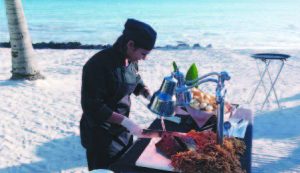 WEDNESDAY
WEDNESDAY
The 2015 festival started off with a bang. Stephanie Southgate (left) from Noble Wine Estates had an intimate gathering of 25 people to sample wines from around the world. All rated 92 and up from Robert Parker, Wine Spectator and Steven Tanzer. Once we stumbled out of that one, we had the option of joining one of three neighborhood strolls through downtown Key West before turning in.
 THURSDAY
THURSDAY
On Day Two, I had the pleasure of working with James Braun (left), a product manager for one of the big whiskey distributors in South Florida. We partnered on a two-hour talk about whiskey and scotch, during which attendees sampled 17 different whiskeys. All different, all boutique and incredibly delicious. The host restaurant, Square One, served small bites of raw fish and pot stickers that blended perfectly.
It only got better. Thursday night was the official welcoming party, Key West style: flip-flops, shorts and loose shirts for the guys, swim club casual for the ladies. The Beachfront at Casa Marina resort offered 10 different wines, a carving station to die for, and a buffet bursting with seafood fished out of local waters. This event alone was worth the price of the plane ticket—and it was just a warm-up for dinner at the nearby Strip House (it’s not what you think). Luciano Castiello from Banfi Vintners of Montalcino, Italy shared his passion for wine and the story of the fabled Banfi family. Each course delivered to our table was accompanied by an impossible-to-find, small-production selection from his winery. Returning to the room that night, I was holding my stomach wondering how I could possibly make it through three more days. Obviously, I’d have to force myself to soldier on and take one for the team!
 FRIDAY
FRIDAY
Friday brought a special section of Santa Barbara wines, along with the makers, to talk about all the West Coast goodies they brought. Buttonwood, Byron and Foxen wineries were represented at the Hyatt Resort, which overlooks the water and (as I discovered that evening) offers a spectacular viewpoint for Key West’s world-class sunsets. The property actually hosted two days of wine-intensive seminars, brunches and dinners.
Friday at the festival also featured a chocolate-making seminar, chocolate and food pairing with wines, a Key West kitchen tour, an East vs. West sunset wine tasting, and—ta-dah!— the Grand Tasting, the focal point of the five days for people like me. This year’s Grand Tasting took place poolside at the brand spanking new Marker Resort. More than fifty wines were poured at tables arranged around the two pools in an enclosed deck area. The evening had an easy vibe, live music, a cool breeze and knowing whispers: Did you try that pinot over there? The malbec from Argentina was incredible. As I raved about the New Zealand sauvignon blanc while chewing on my third coconut shrimp, my date reminded me that we had dinner reservations.
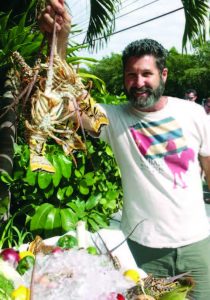 On Marc Certonio’s advice, we snagged a pair of tickets to the event at Charlie Mac’s, a local spot that has some of the best food in town. Juan Hernandez (right), the southeastern director for Domaine Select wines, was conducting a six-course, six-wine dinner for 30 people. I don’t even know where to begin, but suffice it to say that when the braised pork and pasta dish came out paired with a semi-dry Lambrusco, my eyes rolled back into my head. That was course four or five. At some point, Juan decided that seven courses was better than six; either that, or I just lost track. Chef Michael Schultz was the man behind the culinary madness. He is the chef for Pat Croce’s various restaurants and establishments in Key West and he has an unbelievable talent for all things fish. If you do one thing when you come down to Key West, eat at one of Chef Mike’s establishments (my favorite is the Turtle Kraals cevicheria at the marina).
On Marc Certonio’s advice, we snagged a pair of tickets to the event at Charlie Mac’s, a local spot that has some of the best food in town. Juan Hernandez (right), the southeastern director for Domaine Select wines, was conducting a six-course, six-wine dinner for 30 people. I don’t even know where to begin, but suffice it to say that when the braised pork and pasta dish came out paired with a semi-dry Lambrusco, my eyes rolled back into my head. That was course four or five. At some point, Juan decided that seven courses was better than six; either that, or I just lost track. Chef Michael Schultz was the man behind the culinary madness. He is the chef for Pat Croce’s various restaurants and establishments in Key West and he has an unbelievable talent for all things fish. If you do one thing when you come down to Key West, eat at one of Chef Mike’s establishments (my favorite is the Turtle Kraals cevicheria at the marina).
SATURDAY
No trip to the Keys is complete without a shrimp boil. On Saturday, we crossed over the bridge from Key West onto Stock Island and settled into our seats at the funky, island-cool Hogfish Bar and Grill, where one can track the comings and goings of the shrimp boats that make this place famous. We watched the shrimp go from boat to pot, and Hogfish served them with a Mark West pinot. We walked off this meal on Duval Street. Well, maybe that’s not entirely accurate. More than 20 establishments on this half-mile strip were pouring small-production wines, so it was more of a sultry stroll. Hungry again? It was back to the Hyatt deck that evening for cheeseburgers in paradise, with wines to match. A Santa Barbara winemaker dinner followed, but by then we were spent.
SUNDAY
Sunday is getaway day. But who wants to leave? We returned to Stock Island for Prosecco and jazz at Rustica Pizzeria before packing up and checking out. As the festival-goers on our flight settled in for the trip back home, I noticed more than the usual wriggling and shifting as we all tried to get comfortable.
Somehow, in just five days, the seats had gotten smaller.
Editor’s Note: Mike Cohen is EDGE’s Food Editor. A longtime New Jerseyan, he recently made South Carolina his permanent home. He teaches wine courses at The College of Charleston. Check out his Q&A with Key West Food & Wine Festival founder Mark Certonio at edgemagonline.com.
The 2016 Key West Food & Wine Festival is scheduled for January 27- 31. The festival is comprised of more than two dozen ticketed events‹most of which are extremely limited. For more information or to reserve space in 2016, log onto kwfwf.com.
Does your pain need an intervention?
Aside from cold, flu and upper respiratory conditions, the most common reason people see a doctor is due to neck and lower back pain. The causes of neck and back pain can vary greatly. Some are attributable to repetitive injuries, but more commonly the pain is traceable to a single event, such as bending or lifting, or something more direct, for example a fall. Sports injuries are also a very common source of neck or back pain, as are impacts from motor vehicle accidents.
Most neck and back muscle sprains will resolve spontaneously, or with conservative treatments. Patients whose pain persists may seek out stronger pain medication from their primary physicians, and go for various therapies such as massage, physical therapy, chiropractic treatment or acupuncture. These injuries typically resolve within several months of the accident.
But what if they don’t?
If the condition persists despite several months of conservative therapy, then interventional pain management is the logical next step. The goal of interventional pain management is to diagnose and treat the condition with the simplest and least number of treatments possible. Of the patients I see, over 95 percent will improve from these interventions; only a handful will ever need conventional surgery.
Your first visit to an interventional pain management practice involves the taking of a comprehensive history and an in-depth physical examination. Most patients I see have already had an MRI done, which I will review. If it turns out you have not undergone appropriate conservative treatment, then that will be recommended. The focus of the initial visit is aimed toward forming an accurate diagnosis, and from there a discussion of the most likely causes of the condition and the best treatment options.
Tools of the Trade
The mainstay of treatments that interventional pain physicians perform is diagnostic and therapeutic nerve blocks or epidural injections. Once I’ve formed a diagnostic impression, I utilize these interventional therapies to confirm it and treat the condition. Pain physicians use the term “the pain generator” to describe the structure that ultimately is determined to be the origin of the pain. Sometimes it is obvious, but other times it is not. These “tools”—the diagnostic nerve blocks—can help determine if any particular structure is producing the condition.
After the nerve block injection, the patient returns a week later to report on any progress or changes. I instruct patients to keep a diary on how they felt on Day 1, Day 2 and so on. If they report that they felt very little or no pain for a time after the nerve block, then it is very likely that structure is the source of what’s causing the pain. Basic interventions, such as nerve blocks or epidural injections, are the first line of therapy. Once the cause of the condition has been identified, if necessary, more definitive treatments can be performed such as nerve ablation or percutaneous disk decompression procedures. Some patients will be cured outright, and most will achieve sustained pain relief for an extended period of time.
MRIs are an important part of the evaluation, but they often don’t tell the whole story. In many cases, the patients that interventional pain practices see have already been to multiple doctors and received multiple opinions on causes and treatments. More times than not, the actual origin of the pain is not immediately obvious. A phrase I say a lot is that it’s normal to be abnormal—meaning that most patients will not have a MRI study that is completely normal. Most people exhibit some degree of disk degeneration, disk bulging or other abnormalities on their MRIs, because frankly disk degeneration begins at around 30 years of age for everyone. This is true even if they have never had any back pain. So I can’t automatically assume that abnormalities on the MRI are a true indication of what’s causing the pain.
 I’m In Agony…What Now?
I’m In Agony…What Now?
The most common neck and back injuries are sprains and strains—in other words, some type of muscle injury. Most initial injuries are treated similarly: rest, ice application (within the first 24 to 48 hours) and anti-inflammatory medications (NSAIDS). More severe neck and back injuries can involve the disks in the neck and back, nerves, joints and even bones (fractures).
The severity of an injury dictates whether or not you need to seek immediate medical attention. If the injury causes a significant limitation in function (standing, bending, walking, etc.), then it is advisable to be seen by a doctor ASAP.
A Feel for Pain
There are two main components of being a good interventional pain specialist. The first is being a good diagnostician (this is the art part), and the second is being a good injectionist. The latter involves the precision and technique required to perform the nerve block, or whatever treatment is being done. Treatment is an ongoing, dynamic situation. My over 16 years of experience has certainly improved both aspects of my care. Evaluating the results of one treatment, and from there forming a treatment plan leading to permanent relief, is paramount to being a good interventional pain management physician.
Patients usually ask me how many treatments they will need. Most patients only need a few treatments. I would say that 25 to 30 percent who undergo a single treatment return reporting so much relief from their pain that they are basically cured. Most of the remaining patients require two or three treatments to achieve benefit; unfortunately, there is no way to predict when someone walks through the door how many treatments he or she will require. Then, of course, you have those stubborn conditions, which require a more aggressive level of interventional care. What I say to most patients is that it’s not whether they are going to get better, just a matter of how many treatments and what level of therapy they will require.
 There are, of course, conditions we see where we know right away that a cure is not possible. One such condition is when there is permanent nerve injury. In such cases, the goal is palliative care, to relieve as much of the pain and improve as much of the function as possible, using various interventional techniques and other modalities.
There are, of course, conditions we see where we know right away that a cure is not possible. One such condition is when there is permanent nerve injury. In such cases, the goal is palliative care, to relieve as much of the pain and improve as much of the function as possible, using various interventional techniques and other modalities.
Lastly, there are of course some patients whose condition is beyond what interventional treatment can offer and do need surgery. Even so, undergoing a good “pain workup” can improve surgical outcomes because, at the point where someone is referred for surgery, we have already ruled out a good number of possible causes—and most times determined the precise condition that needs surgical intervention.
A need has always existed for a focused discipline that can monitor, diagnose and treat patients with pain-producing conditions. Pain is one of the most common reasons people visit their doctor, and at some point many of those patients will find themselves in need of a specialist who can manage and direct them to the most appropriate course of treatment. The field of interventional pain management actually originated as a subspecialty of anesthesiology. It makes sense if you think about it—anesthesiologists, after all, are doctors who specialize in rendering patients pain-free during surgery and childbirth. The field has grown substantially over the last two-plus decades, and physicians now enter from other fields, including physical medicine, rehabilitation and neurology.
 My MRI shows a disk herniation, do I need surgery?
My MRI shows a disk herniation, do I need surgery?
The take home message here is to always go from a conservative to a more aggressive course of treatment.
If you haven’t gone through a course of physical therapy, you must. Medications such as anti-inflammatories and muscle relaxants can also be beneficial. If symptoms persist, you need to get a comprehensive physical examination. Remember that MRI findings do not tell the whole story. While the most common type of spine injuries involve disk herniations, injuries can also involve the joints and other supportive structures which make up the spine.
If the disk herniation is shown to be the cause of the condition, you may be a candidate for a type of minimally invasive pain interventional therapy, which have fewer possible complications and a shorter recovery time.
When is it time to seek out professional help?
Listen to your body. If you have suffered an injury, you should not do things that exacerbate the pain. Some rest (but not too much) is important—ignoring the pain can sometimes lead to permanent and devastating disability. If the pain has not resolved quickly, seek medical care so that you can be evaluated and begin a course of conservative therapy.
Also, know that—when conservative treatment strategies don’t solve the problem—there are doctors who specialize in getting to the bottom of the pain. Again and again, I see patients who have waited months (or even years) before seeking interventional pain treatment. What I have learned from them is that, unfortunately, the longer a condition has persisted, the more difficult it can be to treat. Interventional pain management is not for everyone, of course, but the benefits greatly outweigh the risks in most cases. At the very least, any patient who is still experiencing pain after several months of conservative therapy—and is not improving—should be evaluated for the appropriateness of interventional therapy. The most important rule of thumb is to begin treatment with conservative therapies, and work your way up from there.
 Editor’s Note: Dr. Todd Koppel is a board-certified pain specialist and
Editor’s Note: Dr. Todd Koppel is a board-certified pain specialist and
anesthesiologist, and Division Chief of Pain Management at Trinitas
Regional Medical Center. The variety of conditions he treats and the
techniques he utilizes can be found on his website, gspmweb.com. His practice, Garden State Pain Management, has offices in Clifton, Elizabeth and other New Jersey locations. Dr. Koppel can be reached at (973) 473-5752.
Issues with the Affordable Care Act include big changes in the way hospitals do business
No one wants to be a “repeat customer” when it comes to hospital care. However, many individuals who spent time in hospitals before the implementation of the Affordable Care Act (ACA)—also known as “Obamacare“—are likely to notice some interesting changes should they need to be hospitalized again.

Gary S. Horan, FACHE, President & Chief Executive Officer of Trinitas
U.S. health care expenditures prior to the ACA had crept north of $2 trillion. The projected goal of Obamacare (besides making coverage available to more people) was to lop a half-billion off that number, with a sharp focus on controlling reimbursement rates to hospitals and insurance plans—primarily in Medicare—by encouraging efficiency and productivity. Hospitals account for more than a third of total healthcare spending in the U.S., more than any other sector. The next largest is physician care (e.g. visits to the family doctor) and clinical work (e.g. blood tests), which combined make up roughly a quarter of health care costs. The changes mandated by the ACA mostly affect these sectors.
One area of significant savings projected by the ACA is the reduction of uncompensated care in hospitals. In theory, as more individuals find affordable coverage, the number of people who use hospital ER’s for non-emergency situations is declining. In practice, however, hospitals serving charity and Medicaid patients are seeing just the opposite.
“We’re already seeing a change with regard to patients moving from Charity Care to Medicaid,” Gary S. Horan, FACHE, President & CEO of Trinitas, told NJBIZ during a recent interview. “Since they now have ‘coverage’ through Medicaid, we’re experiencing a pent-up demand for health services from these patients. Unfortunately, physicians receive very low reimbursement from Medicaid—the lowest in the country—resulting in many physicians not accepting the Medicaid insurance product. This results in a double- whammy for hospitals, as more of these patients are directed to the Emergency Room, where Medicaid reimbursement for hospitals is only about 70 percent of actual costs. Make that a triple whammy—the ACA charges a tax on the hospital industry to help pay for coverage. This comes right off the bottom line and in our case results in a charge of about $250,000.”
Reimbursement was reduced for providers anticipating that they would receive a higher number of patients with insurance but, according to Horan, “As of now it is not quite working out that way.”
One byproduct of the ACA will almost certainly be a shift from the traditional hospital campus to standalone clinics and ambulatory care facilities. Will this spur a radical change in the way new hospitals are designed? Perhaps. The more immediate changes will likely take the form of additions like the $5.2 million Ambulatory Surgery Center that opened at Trinitas last year. Another result of the ACA that will be apparent to consumers is an uptick in acquisitions and mergers of hospitals and even whole hospital systems. In some cases, this may be the fastest way to create the efficiencies demanded by the new reforms and regulations.
One of the more interesting reforms introduced by the ACA is in the way medical services are delivered. For decades, health insurers reimbursed hospitals in a complex and often convoluted manner. Although this pay-per-fee system did not reduce the quality of care, in some cases it de-incentivized coordination of care. Hospitals that took care of their patients with greater efficiency often were not paid for going the extra mile.
To correct this problem, the ACA is phasing in initiatives aimed at reimbursing hospitals and doctors per “episode.” In other words, they get paid X dollars for an appendectomy or knee replacement—which rewards them for quality of care and reduction of wasteful spending. Hospitals with a high rate of readmission for certain cases (ranging from pneumonia to heart attacks) will be penalized, further incentivizing the completeness and quality of care. Interestingly, this could create more opportunities in the nursing field, as hospitals will almost certainly step up their “after-care game“ to visit discharged patients and make sure they are following recovery instructions.

www.thinkstockphotos.com
New Rules for Insurers
The Affordable Care Act has already begun to change the way insurance companies approach the marketplace. For instance, they can now base their premiums for a family on the number of children in that family. Prior to the ACA, they were compelled to offer a flat rate regardless of the number of kids a couple had. However, families with more than three children cannot be charged for more than three, so in this case the flat rate remains in effect. Insurers can also adjust premiums based on the age of the adults covered, but not on gender.
Dozens of services that had been excluded from health plans in the past are now covered as part of “Obamacare” in most states. These services range from autism screenings to shingles shots to prenatal supplements. That’s the good news. The bad news is that insurers will find ways to cover these added benefits in the form of higher deductibles and co-pays.
Some changes brought about by the ACA won’t impact New Jerseyans. Tobacco users can be charged 50 percent more than non-users now, but not in New Jersey, which prohibits this type of surcharge. Another change mandated by the ACA which does not affect New Jersey is the rule that says insurance companies must spend at least 80 percent of premiums on medical reimbursements or medical education. The Garden State already has a similar regulation in place.

www.thinkstockphotos.com
Another ACA initiative involves the reduction of infections. This has been an industry priority for a long time, but in 2015, hospitals that are still behind the curve in infection reduction will see their reimbursement cut by one percent.
Of course, not all of these changes are hitting all hospitals at the same time. In some cases, pilot programs have begun. In others, training for the ACA changes is underway. There are invariably some hiccups whenever new procedures are introduced into the health care field, so the ACA has devoted $10 billion to track the success of its initiatives and, presumably, tweak them as necessary. What might be a great fit for one hospital may present unanticipated hurdles for another.
The goal is to optimize the hospital experience for each patient, from the moment they come through the door to the day they leave, and for weeks after, while enabling a hospital to run its business successfully and efficiently.
 DRIVEN TO CARE
DRIVEN TO CARE
The Trinitas Health Foundation successfully secured funding from multiple benefactors to purchase a new vehicle that will serve as a Specialty Care Transport Unit. The SCTU expands the current transport capabilities of Trinitas by providing a higher level of care for patients who need to be accompanied by a Registered Nurse who is also a paramedic. For example, the new vehicle will be used for critical care patients who are being transferred to the Trinitas Cardiac Catheterization Lab from neighboring hospitals or for ventilator-dependent dialysis patients during transport for treatments.
The following benefactors made the purchase possible: Bayway Refinery of Phillips 66 (recipient of the Trinitas Health Foundation’s Celebrating Philanthropy Award at the Foundation’s 2014 Gala); the Gertrude L. Hirsch Charitable Trust, and the Paragano Family Foundation.
Shown at the recent unveiling of the SCTU are Kathleen Shevlin, Director, Resource Development, Trinitas Health Foundation; Rod Muench, Director Pre-Hospital Services; Nancy Sadlon, Public Affairs Manager, Phillips 66 Bayway Refinery; Darren Cunningham, Refinery Manager; Gary Horan, FACHE, President and CEO; Nadine Brechner, Chief Development Officer & Vice President, Trinitas Health Foundation; Mary Phillips, Community Relations Coordinator, Phillips 66 Bayway Refinery; Brant Maslowski, Mobile ICU Coordinator; Bryan Garrett, SCTU Coordinator, and Joseph McTernan, Senior Director of Community & Clinical Services.
 A SURE BET!
A SURE BET!
The Trinitas Health Foundation’s 11th Evening at the Races was a welcome bright spot in a winter filled with subzero days and nights. Action heated up at The Meadowlands on February 28 as more than 175 guests including Trinitas board trustees, senior administration, physicians, grateful patients, vendors, and employees enjoyed exciting harness racing and raised more than $38,000 to benefit patients of Trinitas. Dr. Richard Mackessy of Union County Orthopaedic and his wife Karen shared a moment with Gary S. Horan, President and CEO of Trinitas, and his wife Arlene.
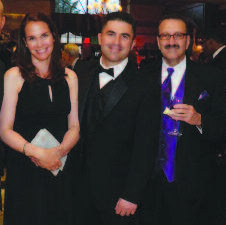
CELEBRATING A PROUD PAST, ENVISIONING A PROMISING FUTURE
Join enthusiastic supporters of Trinitas at the Trinitas Health Foundation’s 2015 Gala on Thursday, May 14. The theme, “Proud Past, Promising Future,” captures the spirit of Trinitas’ 15th anniversary. Wakefern Food Corporation will receive the Foundation’s Celebrating Philanthropy Award; recording star Gloria Gaynor, long time advocate of Trinitas Regional Medical Center, will receive the Humanitarian Award. The Gala returns to The Venetian in Garfield where the breath-taking ambiance of the venue is rivaled only by the extraordinary food and drink. During a full cocktail hour, guests can meet and mingle as they bid on extremely desirable Silent Auction items including trips and one-of-a-kind experiences. Opportunities such as a 50/50 raffle will help raise funds to benefit patients at Trinitas.
For information about the Gala or sponsorship opportunities, contact Laura Ciraco at lciraco@trinitas.org, or (908) 994-8249, or go to www.trinitasrmc.org/foundation.htm and click on the Gala invite.
With Arturo’s in Maplewood a smash success, chef Dan Richer takes his dough on the road to Jersey City
Razza
275 Grove Street, Jersey City. Phone: 201.356.9348
Open Monday through Saturday from 5:30 to 10 p.m. All major credit cards accepted. No reservations are taken. Small plates and salad range in price from $4 to $14. Pizzas are $12 to $18.
It’s late afternoon at Razza, where the art and science of flour and water converge and judgment is pronounced every day at this time.
Dan Richer, bread maestro, is removing 18 loaves from his wood-fired oven at the rear of Razza Pizza Artigianale on Grove Street in Jersey City. They are sizable loaves, but there are just 18. That’s all he bakes any day Razza is open. There’s a deja-vu to his explanation of why: “That’s what fits in my oven. We can’t do a second batch because the oven temperature wouldn’t be right and the bread wouldn’t be right. So when we run out, that’s it.”
This all merits thought, but the nose is ruling. And Richer is talking about his “10 Points for Properly Baking Bread” as he checks each loaf. Yes, it’s cooked all the way through. It’s firm and crisp on the outside.
There are big holes in the crumb. There’s no tunneling. There are ears.
Ears? Yes, Richer says. Ears.

All photos courtesy of Razza
“Every loaf needs an ear. You can pick up a loaf by an edge that rises on the top of a loaf.” He points to one loaf that lacks a proper edge. A problem with the scoring—a slash—made just before the loaves were paddle-carried into the oven. The angle of the slash? The depth of the slash?
Richer is picking up his loaves by their ears, inspecting each one. The vast majority of the 18 loaves have ears in tune with the baker’s carefully orchestrated ritual that consumes a good part of the day at Razza and has consumed the life of the man who shuns the word chef to describe his occupation and smiles, proudly, as he says, “I’m a craftsman.”
Meanwhile, the Razza front-of-the-house team—all of whom had to score 90 or better on a 15-page exam—is gathering at a table to go over the night’s specials. They include a new cocktail, “The Martinez,” which actually is an old cocktail born in California in the 1840s. It’s nigh on showtime, and people are lined up at the door of 275 Grove. They know where they want their bread buttered.
In the beginning
If the name Dan Richer sounds familiar, if the passion, focus and intense pursuit of authentic and correct is something you’ve experienced not in Jersey City, but a little closer to home, then you likely know Arturo’s, the epicenter of soul-satisfying Italian food and pizza in Maplewood. Arturo’s is also owned by Richer, and Razza is the place Arturo’s spawned.
Years ago, Richer bought the longtime suburban pizza spot, but added his own bill of fare—notably a market- and season-driven tasting menu that drew national attention and garnered Richer a spot on the list of candidates for Rising Star Chef of the Year from the James Beard Awards. But he kept working on his pizza, which was head and shoulders above the then-growing pack of pizzaiolos, though not at the level of the best pizza-maker on the planet, New Jersey’s own Anthony Mangieri.
Then, one day, after hearing about Richer, Mangieri “came in for a pizza,” Richer says.
“At that point, I was focusing more at Arturo’s on the tasting menu, the pasta-making, the rabbit-cooking. When he came in, I was so embarrassed by my pizza-making that I knew I had to get better. That visit gave me a new direction.”
A direction that took him to Jersey City, to build Razza.
Richer started studying, reading bread books, delving into the science of fermentation. He reels off the names of bakers who influenced him—from the French professor Dr. Raymond Calvel, who wrote the seminal “The Taste of Bread,” to the American author, theologian, lecturer and restaurateur Peter Reinhart—and talks of years of trials and errors.
 “In pursuit of making great pizza,” Richer says, “I learned how to make great bread.”
“In pursuit of making great pizza,” Richer says, “I learned how to make great bread.”
Inspiring Minds
Dan Richer is all about learning. He studied Japanese cuisine and, in 2005, found Sushi Yasuda on East 43rd St. in New York. Those who worship purist theologies in cuisine know Naomichi Yasuda as the best sushi chef.
Richer agrees. It was Naomichi Yasuda’s words, spoken as he served forth his fishes to Richer at his restaurant, that made the younger chef see the correlations between fish and rice and bread and butter.
“I had the same feeling with Yasuda’s sushi as I did with Anthony’s pizza: It was the rice that did it for me. What Yasuda explained to me so well was the element of time and temperature, of different fishes at different temperatures, of eating one piece at a time because only at that precise moment are both the fish and the rice at the perfect time and temperature. It has to be done at the last second and has to be eaten right away.
“When I started making the bread and the butter, I realized they, too, couldn’t be perfect if the bread was too hot or too cold or the butter too hot or too cold. That level of seriousness is something we take to our bread and butter. I take so much inspiration from Chef Yasuda.”
So much so, that when Naomichi Yasuda left his New York restaurant to the care of his sushi-chef lieutenants and went to Japan to open a minuscule temple to sushi, Richer made a point of traveling to Japan to eat there. He found Yasuda in his element—and at the height of his craftsmanship.
 He is sitting in the dining room at Razza, where he has just finished shaping his dough into the now-iconic Razza shape that resembles a French batard. He glances over at the loaves, resting in individual linen-lined baskets. He consults with Octavio Gadea, who works with him on the bread. Then he continues.
He is sitting in the dining room at Razza, where he has just finished shaping his dough into the now-iconic Razza shape that resembles a French batard. He glances over at the loaves, resting in individual linen-lined baskets. He consults with Octavio Gadea, who works with him on the bread. Then he continues.
“The thing that makes Anthony’s pizza better than anyone else’s is the dough. When you walk into his restaurant, you can smell it. It’s the dough. The essence and soul of pizza is fermenting dough.” True. Be it at Mangieri’s first Una Pizza Napoletana in Point Pleasant Beach, N.J., or the second, on East 12th Street in Manhattan, or the current Una Pizza, in San Francisco, the dough’s been the thing.
As Richer read and worked and experimented, his processes matured. He realized the key was in the fermentation. “I started fermenting everything I could; you come to understand how fermentation is controlled, how to make beneficial bacteria that out-perform the harmful bacteria.
“Innately, as humans, we’re meant to ferment. That became clear to me. It took me out of cooking and into something more like a craftsman. I feel more akin to an ironworker or a cabinet-maker than a chef. You need to understand iron, or wood, and once you understand it, you can put it back together the way you desire. The same is true with flour and water.”
When Richer says he started fermenting “everything,” he isn’t kidding. Pickles, sure. Yogurt, cheese, crème fraiche, naturally.
Then came butter. It was the natural partner for Richer’s bread which was, finally, getting to the level that made him feel good about serving it to his diners. Richer’s butter couldn’t be merely like any other premium butter, not even hyper-priced imported French butter or the good, truly good, cultured butters now sold in supermarkets. Richer’s own butter is made from cream that comes from cows pastured on a dairy farm in Pennsylvania. This dairy-farming family makes small batches of yogurt and saves the cream that rises to the top for Richer. When he speaks of that cream, the craftsman gets a little poetic.
“There’s a week in April when the cream changes,” Richer says. “There’s a time when the cows eat onion-grass and you can taste it in the cream. I love to celebrate the seasonality of our own butter. What’s the fun if it doesn’t taste different? It’s such an amazing cultured product.”
It’s what the denizens are waiting for: Razza’s bread-and-butter course.
 Razza Right Now
Razza Right Now
Before Richer took over the space, 275 Grove had been, in long succession, a bar, a wine store, a popcorn store and, way, way before, The Majestic Theater and a home for vaudeville. It is smaller than Arturo’s. Razza’s kitchen is tiny and much cooking, baking and prep work is done at the rear of the dining space, offering diners a bit of culinary theater. That suits Richer’s mission just fine: “Since our space is smaller, we focus more. That means, if we only do five things, we have to do them very well. On the surface, we look like another wood-fired pizza restaurant. Sometimes it seems like we’re nit-picking. But it’s the details that separate us.”
 Let’s Eat
Let’s Eat
First, the bread. It tastes at once nutty and then, faintly, of rye. This never dominates the palate, but scents the mind with its nuance. There’s not just a single texture to the bread, but multiple textures, from the top crust to the bottom crust—and, oh, are they ever different—to the interior crumb, with its own layers of varying textures, particularly around the holes. The initial slice is gone before you have a chance to delineate all those layers.
So you take another slice, this time remembering the butter. The butter, at once beguilingly earthy-gamey and lushly creamy, has a natural salinity that can become elusive if you go too bonkers on the texture thing. I was into my third slice before I smacked myself for over-thinking. I started eating the butter straight, talking myself into believing it’d be a kind of palate-cleanser. Then came the stracciatella, the only thing that could get me to stop eating the butter.
Razza’s special salad that day was centered around minutina, a green that’s grassy in appearance, verdant and almost juicy in flavor. Its inherent sweetness proved an irresistible counterpoint to slivers of wild mushrooms, most importantly maitakes. There’s the barest splash of balsamic vinegar and exquisite olive oil to help fuse the greens and mushrooms.
Meatballs here employ Razza’s bread as binder. They are fluffy, they resonate beef, they come swathed in sauce.
For Dan Richer’s popular Pork Pie, pig’s feet are simmered. The ensuing broth is chilled. The fat is skimmed. The result is a kind of pork “jello,” which is cut into tiny cubes. These cubes are set atop pizza dough along with bacon and shaved onion. The gelatin melts into the dough as the pie bakes in the wood-fired oven, mingling with the addition of Parmigano-Reggiano cheese into a kind of pork sauce. After one slice, Razza’s Pork Pie soars to the very top of my personal Last Meal foods’ list.
– Andy Clurfeld
Fact is, Razza does far more than five things better than anyone else around. There’s the bread, yes. The butter, check. The fire-roasted meatballs, of course. There’s also the handmade stracciatella, a cheese meant to go with the Razza bread. There are the pizzas, some of which are seasonal, and there are salads, with many ingredients sourced from local farms. There are the daily special pastas, the artisan cocktails and the short-and-sweet wine and craft beer lists.
There’s also the setting. Richer preserves the past while making comfortable the dining experience. One wall, with its layers and layers of paint jobs past, looks like an Abstract Expressionist painter got a deal on greens, blacks and browns and went to town. It’s got the kind of texture that makes touching an irresistible response, much like you have to touch Richer’s breads. There’s a wood bench, from a temple, and wood slabs from Pennsylvania barns set atop iron pedestals as tables. (Richer clearly respects his fellow craftsmen.) There’s a huge blackboard, with the Razza processes for dough, butter, meatballs and more diagrammed in chalk.
Razza’s oven is the altarpiece, where the embers fundamentally simmer all night long and a giant cast-iron door keeps oxygen at bay. “When we get here in the morning,” Richer says, “it’s at 685 degrees.” The bread starts baking when the oven reaches 550 degrees, give or take 25 degrees, but no more, no less, and the residual heat—after the bread is done and the oven is at about 525 degrees—is used to roast onions and meatballs. After that, new wood is used to stoke the fire so the oven is ready for the nightly procession of pizzas. There is a dance of aromas all day, all night at Razza.
Those aromas linger, much as they do at the restaurant homes of Dan Richer’s mentor, Anthony Mangieri, with whom he shares a fundamental philosophy: The party’s over—for the day, at least—when the fresh dough or daily bread is gone. The smart savor those aromas, the sign of a master craftsman at work.
24 hours ’til the end of the world.
We are all guilty of taking our planet for granted. Admit it, your family would much rather spend a Saturday afternoon flaked out in the den watching Netflix than badgering your Senator about climate change, protesting a local polluter, or picketing a nuclear plant. Which is why I became interested in finding a way to gain a greater appreciation for our precious little blue marble without actually leaving the sofa. Being a child of both Hollywood and Madison Avenue, the solution came easily: a 24-hour, all-hands-on-deck family binge-watch comprised entirely of movies about the end of the earth. For me, the challenge wasn’t staying awake for 24 hours, but narrowing down my picks to a dozen or so.
I highly recommend this exercise. Families have such easy access to so many movies nowadays that we tend to overlook what makes a picture worth watching: the story, dialogue, individual and ensemble performances, cinematography and director’s realization of his or her vision. I found this to be especially true in end-of-the-world scenarios, because of how easy it is to be seduced by special effects.
These are my picks—in no particular order, but grouped by category. If you spot an unfamiliar title, don’t write it off; you’d be missing the entire point of this article. Instead, think of it as my gift to you. And, if you like, think of me as a Friend for the End of the World…which, by the way, did not make my list.
BIG BANGS
There are any number of ways to destroy the planet, but most movies spare us the gory details. These three leave little doubt as to the fate of the earth…

Paramount Pictures Corp.
When Worlds Collide • 1951
The first Technicolor spectacular Sci-fi end-of-the-world picture, winner of the 1951 Oscar for Special Effects. Produced by the legendary George Pal, who went on to make the original screen adaptations of H.G. Wells’s The War of the Worlds and The Time Machine. When Worlds Collide is a triumph of postwar retro futurism—devoid of computer graphics, chock full of hand-crafted scale miniatures and background mattes in static and soothingly slow panning/zooming shots. Wait, I know that guy! Keep an eye peeled for Hayden Roarke (Dr. Bellows from I Dream of Jeannie) as the astronomer who discovers the imminent collision.

Columbia Pictures
Dr. Strangelove (Or How I Learned to Stop Worrying and Love the Bomb) • 1964
On the top of everyone’s doomsday list. Nominated for four Oscars (Best Picture, Screenplay, Director, and Actor in a Leading Role). Stanley Kubrick directs Peter Sellers playing three separate characters, as well as George C. Scott, Sterling Hayden, Slim Pickens, Keenan Wynn, and James Earl Jones in a genius screenplay he wrote with Terry Southern (Easy Rider) and Peter George (Fail-Safe). The film was based on Two Hours to Doom, written by George. Maybe the best black comedy ever made? Apocalyptically hilarious.
Melancholia • 2011
Lars Von Trier’s idiosyncratically Nordic interpretation of When Worlds Collide, by way of Jean Genet’s The Maids and Ingmar Bergman’s Cries and Whispers. Got all that?Charlotte Gainsbourg (the lead actress of Von Trier’s last three pictures) is off-the-charts brilliant, and Jersey Girl Kirsten Dunst gives maybe the best performance of her career, winning the Best Actress award at the Cannes Film Festival. Charlotte Rampling and John Hurt play the parents of the two sisters, Claire and Justine, in the days before a rogue planet smashes into earth. Wait, I know that guy! Udo Kier, who portrays the wedding planner, starred in the title role of Andy Warhol’s Dracula.
JUST A MATTER OF TIME
I’ve resisted the temptation to heap a bunch of dystopian dramas into this category, instead opting for stories where, clearly, mankind is about to blink out of existence…
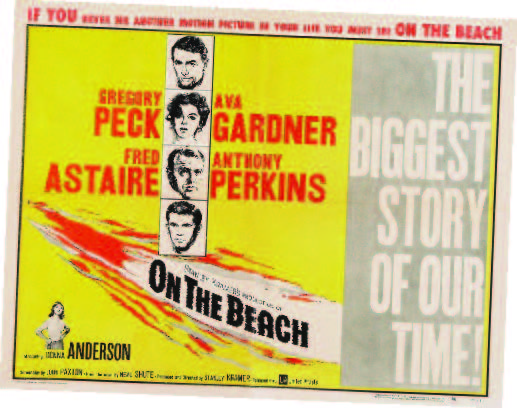
Lomitas Productions/United Artists
On the Beach • 1959
The other side of the Dr. Strangelove coin, the film was adapted from the 1957 best-selling novel by Nevil Shute. World War III has happened. Australia remains temporarily unscathed, but the fallout is headed Downunder and the government is distributing suicide pills and lethal injections. The lone surviving American submarine, captained by Gregory Peck, is sent on a desperate mission. Stanley Kramer directs Peck and Ava Gardner, Fred Astaire, Anthony Perkins and Donna Anderson (who worked for Kramer a year later in Inherit the Wind). For my fellow car crazies, the scenes of Astaire competing in the last Aussie Grand Prix before the lethal fallout arrives is on par with those of Kirk Douglas in The Racers (1955). On the Beach makes my list (and those of many other critics) of the 100 best pictures ever made; class-AAA grade American cinema for the brainy and ethical. Spoiler Alert! If you don’t cry at the “Waltzing Matilda” finale, you just aren’t human.
Soylent Green • 1973
Charlton Heston and the end of the world seem to have been made for each other. In this classic, he’s dealing with humans, not apes. The story unfolds in the not-too-distant future, when overpopulation and pollution have caused widespread agricultural collapse and turned New York City into a place resembling a cross between Calcutta and Brasilia. Millions queue up every day to buy Soylent Red, Yellow and Green—nondescript food-product “cakes” made from soy and ocean plankton, which are the only remaining protein sources that humans are still able to cultivate and harvest. Heston plays an NYPD detective investigating the killing of a top executive at the Soylent Corporation, and asks his avuncular friend Sol Roth to help him solve the crime. Sol is portrayed by Edward G. Robinson, who dies with dignity and grace, in the very last scene of his 60-year, 112-picture career.
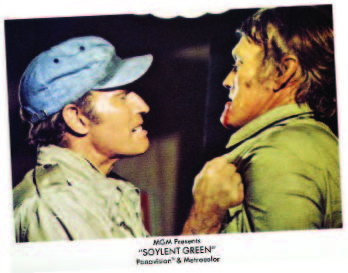
MGM Studios, Inc.
Spoiler Alert! Alas, as in Beneath the Planet of the Apes and The Omega Man, Heston proves once again that not even Moses can stop Earth’s inevitable final sunset.

Mandate Pictures/Point Grey Pictures/
Columbia Pictures
This is the End • 2014
The book of Revelation as interpreted by Seth Rogen and James Franco, who drove Franco’s neighbors in Silver Lake half-mad using his own home as the shooting location for his thoroughly entertaining, blisteringly funny, over-grown adolescent satire of the Biblical Apocalypse.
The ensemble cast, all playing themselves, includes Emma Watson, Jonah Hill, Craig Robinson and Danny McBride. A wild and wooly pastiche of 2012, The Exorcist, The Rapture, Night of the Living Dead, and The Player, the film is fueled by a breakneck series of show-biz jokes and special
effects. Wait I know that guy! Really? Who don’t you know in this movie?
CUTTING IT CLOSE
Calling these films “cliffhangers” would be underselling the consequences if things were to go bad. But (yeah!) the species squeaks through in the end…

Paramount Pictures Corp.
Crack in the World • 1965
No end-of-the-earth binge would be complete without at least one great “bad” movie. Dana Andrews plays a middle-aged, recalcitrant scientific genius who devises a way to provide limitless geothermal energy to the human race…by driving a nuclear bomb into the earth’s magma. It’s a bad idea on so many levels. The star of Academy Award winners like Otto Preminger’s Laura (1944) and William Wyler’s The Best Years of Our Lives (1946), Andrews proves one of the cardinal rules of the Screen Trade: The higher an actor may rise, the farther he may eventually sink. Wait I know those guys! Co-starring in Crack In the World are Janette Scott and Keiron Moore from 1963’s Day of the Triffids, another piece of sci-fi silliness, featuring an invasion of giant parasitic motile plants.

Universal Pictures
Colossus: The Forbin Project • 1970
Every end-of-the-world binge list also needs a movie almost no one remembers, or has even heard of. This isn’t exactly the end of the world, just of the world as we know it. Under the direction of Dr. Charles Forbin, the planet’s greatest computer scientist, the U.S. government builds a HAL9000/IBM Watson-type Frankenputer, names it Colossus, and puts it in charge of all the nukes. The Russkies swipe the recipe, build one of their own, and name it Guardian. Colossus detects the other system and, under threat of atomic annihilation, demands that the two of them be linked, at which point it begins dictating to the human race. Free will, we are reminded, is merely an illusion. It’s a marriage made in Orwellian Cold War Heaven. Director Joseph Sargent (who passed away at age 89 in Malibu just before this past Christmas) was four-time Emmy winner, and one of the most prolific and versatile feature film and episodic television directors of the past 40 years. Wait I know that guy! Dr. Forbin is played by Eric Braeden, fresh off the hit show The Rat Patrol and destined for soap stardom as Victor Newman on The Young and the Restless.

Touchstone Pictures/Buena Vista Pictures
Armageddon • 1998
Directed by sorcerer Michael Bay. His third blockbuster following the success of the Will Smith/Martin Lawrence buddy movie Bad Boys, and Nic Cage/Sean Connery white knuckle action fest The Rock. Starring Bruce Willis, Ben Affleck, Billy Bob Thornton and Liv Tyler. Despite its summer release just 10 weeks after a strikingly similar big-budget sky-is-falling film, Deep Impact, Armageddon went on to edge out Saving Private Ryan as the year’s worldwide box-office champion, making $553 million. Deep Impact, co-starring Robert Duvall, Morgan Freeman, Tea Leoni and Elijah Wood, was equally riveting, and featured slightly better scientific references. But since only one “disasteroid” movie can make the cut, I give Armageddon the slight edge for its frantic (but binge-worthy) pacing, and Bay’s often sly sense of humor. If a rock the size of Texas were headed for earth, I’d be okay launching Bruce Willis and Ben Affleck into space. Some might argue it’d be a good idea even if there were no asteroid. But putting an unhinged Steve Buscemi on the same flight? Sheer Bay-esque genius. Armageddon was shot in just over 100 days, and didn’t get much love from the critics—Roger Ebert included it on his all-time “most-hated” list. Another reviewer described it as “a machine gun stuck in firing position for 2 1/2 hours.” All of which earn Armageddon a special place in the binge.
THOSE PESKY ALIENS
Apparently, extraterrestrials just can’t get enough of us. Or perhaps it’s the other way around. Whatever the case, each of my three picks either generated a remake or sequel that measured up the original.
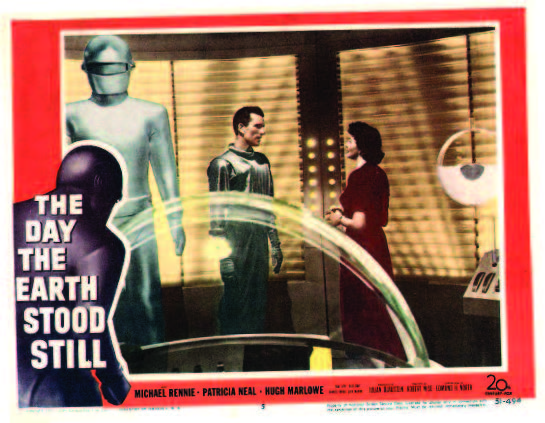
20th Century Fox
The Day the Earth Stood Still • 1951 & 2008
The Cold War is interrupted by the arrival of the alien Klaatu, portrayed by stately Michael Rennie and his killer-robot sidekick Gort. Klaatu delivers an ultimatum: Join the universe in peace or be reduced to a “burned-out cinder.” Patricia Neal is the terrestrial quasi love interest. The 1951 original was directed by Robert Wise, an Olympian of the American cinema who had first gained fame for his editing of Citizen Kane. Wise would lend his directing talents to West Side Story, The Sound of Music and The Sand Pebbles in the 1960s. In the late-1970s, Wise’s wife (a huge Star Trek fan) convinced him to direct Star Trek: The Motion Picture, initiating a movie franchise that continues to this day. The music for the 1951 film was supplied by Bernard Hermann, better known for his work in Taxi Driver and the Hitchcock classics Vertigo, Psycho and North By Northwest. The 2008 remake of The Day the Earth Stood Still, starring Keanu Reeves post-Matrix along with Jennifer Connelly, was directed by Scott Derrickson (who’d cut his teeth in the horror genre) is very entertaining—as it should be given an $80 million budget. The Cold War premise is abandoned in favor of mankind’s poor environmental stewardship. Klaatu threatens to eradicate humans so that the planet’s other creatures may thrive. (There go real estate values.) Spoiler Alert! Neither version offers a translation of the film’s three iconic words: “Klaatu Barada Nicto.”
(The) War of the Worlds • 1953 & 2005
Another George (When Worlds Collide) Pal masterpiece of old-school organic special effects compositing, animation, and model making—here in collaboration with Byron Haskin—the 1953 original was shot in “3 Strip” Technicolor. This involved three separate negatives for red, blue and green, and used a camera that weighed in at a quarter-ton. The concept of the manta ray/cobra Martian machines was the idea of Japanese-American master Art Director Albert Nozaki, who was to Hollywood model engineering what Larry Shinoda (designer of both the Corvette and the Mustang) was to Detroit. Full disclosure: I’m a complete Nihonophile (admirer of Japanese culture)…I drive a white 2012 Scion iQ, which bears an uncanny likeness to a Star Wars imperial storm trooper’s helmet, and from April to October, a white 1995 Mazda Miata, the original model with the flip-up round headlights. When Steven Spielberg took on the challenge in 2005 of remaking the Mount Everest of sci-fi pictures, he pulled out all the stops. The original George Pal production had been limited by its budget to create the genuine H.G. Wells conception of the Martian tripods. Spielberg had the funds, as well as the creative talent and modern technology, to realize them. Spoiler Alert! My grandfather owned a car dealership in Jersey City, so it was kind of cool watching neighboring Bayonne get vaporized.
Whichever version you prefer, you’ll probably share my frustration with the critical, inscrutable logical flaw in both the original picture and the remake: Any alien armed with the advanced science and technology to actually invade Earth would be able to understand terrestrial biology, and to have synthesized antibiotics and antivirals for themselves. However, in defense of Wells, he penned The War of the Worlds in 1898, when practically the only “medicines” known to mankind were tinctures of mercury, laudanum, cocaine, and aspirin. Penicillin wasn’t discovered by Alexander Fleming until 1928. I still prefer this premise to that of Independence Day, a very watchable movie where Will Smith and Jeff Goldblum save the planet with a laptop virus. How lucky we were that the aliens ignored all those annoying McAfee pop-ups, right?
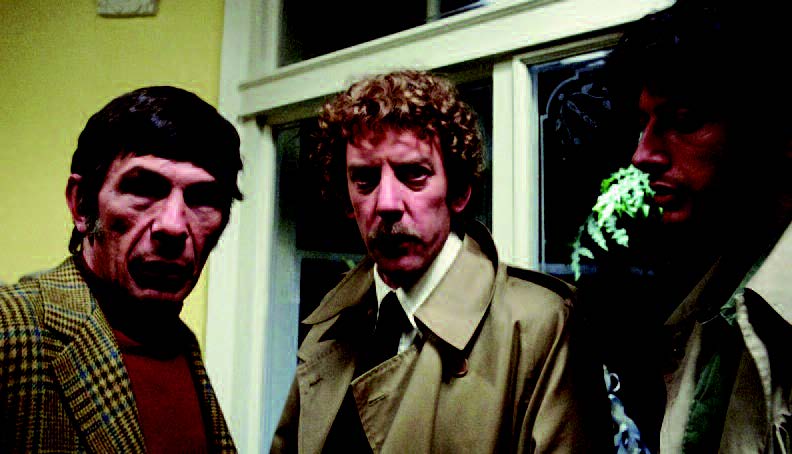
Allied Artists Pictures/United Artists
Invasion of the Body Snatchers 1956 & 1978
The Eisenhower-era original has long been considered to be the ultimate “Red Menace” paranoia picture. Shot in super-sharp, high-contrast “Chem-Tone” film noir black and white, the 1956 version is carried by Kevin McCarthy, whose over-the-top wide-eyed look of panic and confusion is sublimely demented. The 1978 remake, shot on location in San Francisco, is stylistically 180 degrees from the original, with soft, low-key pastel colors, fishnet lens filters, and director Philip Kaufman’s smart casting choices of Donald Sutherland, Veronica Cartwright, Jeff Goldblum and the recently departed Leonard Nimoy. Is it me, or do they all look a little like aliens? Thomas Jefferson wrote “The price of Liberty is eternal vigilance.” Something to think about when you watch Invasion.
Men In Black • 1997, 2002 & 2012
Buddy cops/secret agents J and K take on the bad guys from out there…with a little help from the many who’ve been living here (apparently, since the 1960s). Will Smith and Tommy Lee Jones strike me as a kind of cross between Mel Gibson and Danny Glover’s Lethal Weapon characters and Robert Vaughn and David McCallum in The Man from U.N.C.L.E. An unlikely pairing that works again and again. In I and II, Rip Torn portrays the indifferent, world-weary chief of the MIB Agency to sardonic perfection. The standout support player in MIB I, however, was Linda Fiorentino as the sexy coroner. (Be still, my heart. I’ve always had a thing for her, ever since Gotcha with Anthony Edwards.) Lara Flynn Boyle and Rosario Dawson play the female leads in MIB II, while Emma Thompson replaces Torn in the 2012 three-quel MIB III. The time-travel plot of III features Josh Brolin doing a dead-on impression of Jones as a young agent. Wait I know that Guy! In MIB I Vincent D’Onofrio plays the perfectly freakish, psychotic evil alien cockroach.
Editor’s Note: Luke Sacher has worked in the motion picture and television industry since 1982 as a cinema-tographer, editor and writer, primarily of documentary features. Among his credits are: Radium City (1987), which was selected to the Lincoln Center Film Festival; Who Killed Adam Mann? (1991), winner of a 1992 DuPont-Columbia Silver Baton; AIDS, Blood and Politics (1993) for PBS/Frontline; Jerry Lewis: The Last American Clown
Is your pet truly happy with its home away from home?
As a college undergrad, I volunteered at the local Humane Society for several years. One of my duties was to check in on the new arrivals, report on how they were adjusting, and try to make them as comfortable as possible until we could find them loving homes. Given the circumstances, most of the dogs and cats did remarkably well. Every so often, however, I sensed that one required some extra attention. In a couple of cases, I actually folded myself (I am 5’11”) into their cages and gave them the close, physical contact I could see they needed. I became so close to one little black dog that I adopted him. I couldn’t imagine him not being a part of my family. If you are still reading this story, it’s okay—you can admit it: I am the person you would like to imagine is looking after your pet when you are away. Unfortunately, I’m no longer in the pet-cuddling business. However, if you do your homework, you can find people like me who are.

www.istockphoto.com
Ask 100 pet owners what the most stressful part of a vacation is, and half are likely to answer making sure my pet is okay. The other half? I’m pretty sure they’re lying. The truth is that, deep down, everyone wants their animal to enjoy quality time while they are away. For some creatures (say, a turtle) quality time equals getting fed and being left alone. For others, the more human contact the better. While sky’s-the-limit, spa-experience boarding options do exist, most vacation care falls somewhere in between these two extremes.
Building a basic “profile” of your pet is a helpful tool in choosing the best care option. There are a number of factors to consider, including:
- Type of pet, age of pet and length of ownership
- Does your pet require special care? Does it have a routine?
- Is there anything unusual about its diet or medical history?
- Is your pet comfortable with new people and places?Other animals?
- Your pet’s temperament. Does it mind being left alone? Does your pet have separation anxiety?
- What sets off your pet? What are your pet’s negative behaviors or habits?
Obviously, some pets are more mobile than others (good luck lugging that 40-gallon fish tank anywhere!), so exercise your better judgment on this one. In some cases, your pet so dislikes boarding or traveling that a pet-sitter is the only viable option. Age is another important factor. Although there is no general consensus about what age is too young for an animal to be boarded, most would agree that boarding under the age of 6 months is not the best idea for a dog or cat. Because most facilities will require certain vaccinations or even that your pet is spayed or neutered before boarding, you will have to wait until they are at least old enough for these procedures. If you do need to go out of town while the cat or dog is still young, boarding with your breeder or veterinarian is an option, albeit an imperfect one.

www.istockphoto.com
SIT!
Pets are most comfortable in their own home and personal space, so pet sitting is a good option for many pet owners. This is usually a better choice for older pets, or ones with health problems that are less mobile and require specialized care and routines. By hiring a trusted sitter, pet parents can rely on personal, one-on-one attention for their pets in a familiar and comfortable environment. This option is often cheaper than boarding and eliminates the hassle and stress of pet transportation. If you don’t have a friend, family member, or neighbor capable of the responsibility, there are a number of services where you can locate reliable, experienced pet sitters. Many sites require background checks on sitters, offer “pet insurance,” and provide reviews and ratings for their sitters, which helps you choose the right person for your pet.
DogVacay.com is an intriguing company. It has specific training and emergency procedures that its sitters must follow, 24/7 customer support, and easy online booking and payment. You choose whether your dog will stay in your own home or at your pet sitter’s, and you receive daily photo-updates of your animal while you’re gone. The National Association of Professional Pet Sitters (petsitters.org) and Pet Sitters International (petsit.com) can point you to a professional pet sitter for any type of pet.
Most owners arrange a meeting between pet and sitter to make sure the animal is comfortable with this new person
in its territory. It also gives the sitter time to become familiar with the layout of the home. Payment should be arranged beforehand, as well as how often you expect the sitter to stop by and whether he or she will be sleeping over at your house. Give the sitter your specific, detailed instructions, schedules, house rules, and emergency contact information, and that of the local veterinarian. It is also a good idea to have this written out for the sitter to keep on-hand as a reminder.
If the pet sitting option seems right for you, the final consideration is whether it’s right for your pet. Some anxious pets will develop negative behaviors when left at home alone, even for very short periods, if they sense that their owner might not be returning. This includes loud, persistent barking (or meowing), urinating or defecating inside the house, and scratching or chewing up furniture, personal belongings, or even the house itself. I once fostered a small dog that blasted through the bars of her crate and then scratched an escape hole under my bedroom door. This type of behavior is not only destructive, but potentially dangerous—especially if the animal ingests inedible materials or chews through electrical wires. These pets require more supervision and attention throughout the day, and may be more suited for a boarding facility where they will not be left alone and are less likely to be destructive or hurt themselves.
BOOK IT!
Pet boarding entails any kind of pet care outside of your own home. It could be in either a private residence or commercial facility, including doggy day cares, boarding with a veterinarian or breeder and, yes, even luxury pet spas. Some of the most popular boarding options are in the homes of experienced individuals, where pets can receive a lot of personal attention in an environment that is more similar to their home. It’s even more important to do your research on this type of boarding, because they may not be required to follow the same regulations or standards as a more commercial facility. They often have a limited number of spaces, so booking your pet’s stay early is important, especially if you have a dog who loves these visits as much as you adore vacationing.
Okay, you’re not sending your kid to boarding school. But it’s still worth doing your homework before picking a boarding situation. In addition to comparing bells and whistles, read through online ratings and reviews of each facility. Just because your friend, family member, or vet recommends a certain boarding facility does not mean that everyone had the same positive experience. Have a list of questions prepared, including:
- Where will my pet stay? Alone or with others?
- How long will my dog be walked? Played with?Outside? Inside? Alone? With others?
- What will my pet eat? Can you follow my special instructions?
- What are your standards for safety and security?Hygiene? Health? Required vaccinations?
- Is the staff qualified? Is veterinary care available? How many staff members do you have?
- Do you do any behavioral training?
- What happens if my pet gets sick or injured? What are your emergency procedures?
- What is the total cost? What amenities or services does this include?
- What do I need to bring along?
There are not many federal regulations for boarding facilities, but individual states and cities do set their own specific standards. Make sure your boarding facility is in compliance with these regulations; additional accreditation or certifications are a plus. The International Boarding & Pet Services Association (IBPSA) offers training and accreditation for boarding facilities, as well as groomers, dog walkers, and veterinarians. Any non-veterinary facility can also earn accreditation and certification from the Pet Care Services Association (PCSA) if it meets certain standards. Above all else, make sure you can secure a boarding agreement that guarantees what you expect out of the boarding facility.
 Unfortunately, for some people and their pets the first boarding experience is also the last. Certain pets struggle with the boarding environment and develop nervous, defensive behaviors. The combination of an unfamiliar environment, strange people and animals, and changes to the typical routine can completely change an animal’s behavior. During my time working at the shelter, I noticed that some animals never quite adjusted to living in a kennel. We struggled to get these animals adopted because of these nervous, erratic, unpredictable, defensive, and even aggressive behaviors. Some animals responded with just a little extra attention, including the dog I adopted. As a last resort, to free up space in the shelter, we would place these nervous animals in foster care, where their behavior and temperament improved dramatically, making them much more adoptable. Some other downsides to pet boarding are the higher cost and risk of exposing your pet to disease. Most kennels require vaccinations, but there are a few illnesses (such as kennel cough) that spread in this type of environment.
Unfortunately, for some people and their pets the first boarding experience is also the last. Certain pets struggle with the boarding environment and develop nervous, defensive behaviors. The combination of an unfamiliar environment, strange people and animals, and changes to the typical routine can completely change an animal’s behavior. During my time working at the shelter, I noticed that some animals never quite adjusted to living in a kennel. We struggled to get these animals adopted because of these nervous, erratic, unpredictable, defensive, and even aggressive behaviors. Some animals responded with just a little extra attention, including the dog I adopted. As a last resort, to free up space in the shelter, we would place these nervous animals in foster care, where their behavior and temperament improved dramatically, making them much more adoptable. Some other downsides to pet boarding are the higher cost and risk of exposing your pet to disease. Most kennels require vaccinations, but there are a few illnesses (such as kennel cough) that spread in this type of environment.
The key to making the right choice is to understand your options and, just as important, to understand your animal. The goal for all is peace of mind. The dog (left) I adopted in college, by the way, turned out to be a winner. At least my parents think so, which is good because now he’s “their” dog. They found a great boarding situation, and determined that the dog actually prefers leaving the house than staying with a sitter. When the family travels, they drop him off at a local kennel operated by a man the dog absolutely adores. The closer the car gets to the destination, the more excited he becomes.
As soon as the car door opens, he sprints the final 100 yards to the kennel door, and can’t wait for my parents to leave. I get it. I felt the same way when I was a teenager.
Checking In
 In cases where pet-sitting and boarding aren’t viable, the best option may be to travel with your pet. For the record, a high percentage of people who choose to travel with their pets do so because they are the ones with separation anxiety. Whatever is behind that choice, pet-friendly hotels are becoming more popular around the world and offer a surprising variety of amenities. Pet owners can find hotels that offer charming welcome gifts, comfortable pet beds, designated areas for walking, playing or bathroom breaks, pet room service, day care, and even luxury spas. Guests can also expect informed concierge services that can point them to pet-friendly attractions in the area. To find pet-friendly hotels in the United States, plug your destination into Pet-Friendly Hotels (pet-friendly-hotels.net) or Pets Welcome (petswelcome.com). According to Pets Welcome, these are the Top 10 Pet-Friendly Destinations
In cases where pet-sitting and boarding aren’t viable, the best option may be to travel with your pet. For the record, a high percentage of people who choose to travel with their pets do so because they are the ones with separation anxiety. Whatever is behind that choice, pet-friendly hotels are becoming more popular around the world and offer a surprising variety of amenities. Pet owners can find hotels that offer charming welcome gifts, comfortable pet beds, designated areas for walking, playing or bathroom breaks, pet room service, day care, and even luxury spas. Guests can also expect informed concierge services that can point them to pet-friendly attractions in the area. To find pet-friendly hotels in the United States, plug your destination into Pet-Friendly Hotels (pet-friendly-hotels.net) or Pets Welcome (petswelcome.com). According to Pets Welcome, these are the Top 10 Pet-Friendly Destinations
- Adirondacks
- Blue Ridge Mountains
- Cape Cod
- Catskills
- Hamptons
- Jersey Shore
- Lake Tahoe
- Martha’s Vineyard
- Napa Valley
- Oregon Coast
A good actress knows how to make a part her own. A great one makes you wonder how anyone else could have possibly played it better. Laura Prepon has a knack for creating indelible characters and a talent for commanding the screen. In her third season as Alex Vause on the hit Netflix series Orange Is the New Black, she brings new depth to a character that already ranked among the most complex and conniving on television. Born and bred in Watchung, Laura had what many might consider an unconventional upbringing. As Gerry Strauss discovered, that upbringing not only seemed perfectly natural…it gave her the confidence and freedom to become a star.
EDGE: You had a successful career as a model when you decided to throw yourself into acting. Why make what was really a risky switch?
LP: It’s funny, because I was always really great at science and I was going to be a surgeon like my father. That was my plan, to become a doctor. But as a kid, there was something missing from my life. I always knew there was something I was searching for, but I didn’t really know what it was. None of my friends were actors, or remotely involved in the drama department in my school, which was non-existent. Anyway, I started modeling when I was 15 and had a chance to move to Europe. My mother said, “Go.”
EDGE: At 15?
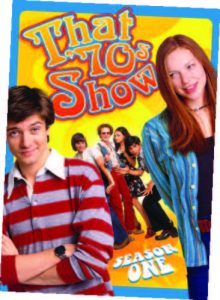 LP: I had a very unorthodox upbringing, but in an amazing way. My mother trusted all of us implicitly and treated us more like her friends than her children. We were all very independent and took care of ourselves at a young age. She totally instilled confidence in us, as well as the sense of being an individual. So I moved to Milan at 15 and lived there for about a year and a half. I loved living abroad and I loved living on my own at such a young age. It really makes you grow up quickly. The first acting I did was an Italian Uncle Ben’s Rice commercial. I did that job and I was just like, “This is awesome.” It was more along the lines of what I was searching for. So I quit modeling and I moved home. I said to my mom, “I want to try this acting thing.” She’s like, “Okay.” She was totally supportive, as she always is. I never in my life even mentioned getting into acting and now I’m saying I want to be an actress. She’s like, “Great, yeah.” I started acting, got the part on That 70s Show that year and moved to Los Angeles in 1998. I’ve been living here since. It really was just one of those things that was meant to be, even though it wasn’t the path I was on.
LP: I had a very unorthodox upbringing, but in an amazing way. My mother trusted all of us implicitly and treated us more like her friends than her children. We were all very independent and took care of ourselves at a young age. She totally instilled confidence in us, as well as the sense of being an individual. So I moved to Milan at 15 and lived there for about a year and a half. I loved living abroad and I loved living on my own at such a young age. It really makes you grow up quickly. The first acting I did was an Italian Uncle Ben’s Rice commercial. I did that job and I was just like, “This is awesome.” It was more along the lines of what I was searching for. So I quit modeling and I moved home. I said to my mom, “I want to try this acting thing.” She’s like, “Okay.” She was totally supportive, as she always is. I never in my life even mentioned getting into acting and now I’m saying I want to be an actress. She’s like, “Great, yeah.” I started acting, got the part on That 70s Show that year and moved to Los Angeles in 1998. I’ve been living here since. It really was just one of those things that was meant to be, even though it wasn’t the path I was on.
EDGE: So that was it for modeling.
LP: I never wanted to model. I’m the youngest of five kids and my eldest sister was working at Glamour magazine. I was always tall and skinny as a kid and she suggested I try it. I’m like, “No. What? Why would I ever want to model?” She said, “Go to this agency.” I literally took these 4 x 6 photos of us from a Mediterranean cruise and they signed me. That was it. And a month later, I was in Milan.
EDGE: What do you think made you so immediately appealing as a model and an actress?
LP: I’m trying to figure out how to answer your question without being like, “Yeah, I have that It Factor.” What I will say is that I know that I’m not like other people. Even growing up, I always looked different. I have red hair. I have a deep voice. I’m tall. I always was outside of the norm. I was not a cookie-cutter blonde cheerleader. It’s funny, while I was on That 70s Show, obviously, I’m being sent for movies, but I wouldn’t get them. I’m like, “What’s going on?” I would get weird and introverted about it. I would talk to my team about it and they’re like, “Laura, this is a great thing. You’re not cookie-cutter. You are you. You’re an individual, and when people get you, they get you—and nobody else can play the roles that you play.” Now, as I’m evolving into myself and becoming a woman in this industry, I am so happy that I’m different. I am so happy that I’m not a cookie-cutter actress, because those are the roles that stand out, the roles not everybody can play—roles that are unique and make an impact. I love that part of me, so it’s great.
EDGE: That 70’s Show has had great success in syndication. Is it weird to still see yourself during those younger days, when you were still growing up and developing your identity?
LP: You know, that’s interesting because a lot of the jobs that I’ve done are so tied to that point in my life, and that’s awesome. Honestly, I love it. When I see That 70’s Show now I literally get such a nostalgic feeling out of it. When people look back at their school yearbook from high school or college and have all these memories—that was That 70s Show for me. I think about growing up with my co-stars. I saw Topher Grace yesterday. We had lunch together, and we were just talking about the show and how it had such an amazing impact on our lives.
EDGE: What happened after the series wrapped?
LP: Two weeks later, I jumped onto a show called October Road and played a woman named Hannah Daniels. It’s funny because at that point, it was as if I’d “graduated” from That 70s Show. Hannah was a young mother. It felt like leaving high school or college and getting that first job in the real world. Psychologically, moving from a character like Donna into a character like Hannah was like transitioning in my life.
EDGE: What does it feel like to play Alex Vause in Orange Is the New Black?
LP: Getting into a show like Orange Is the New Black has been really interesting. Playing this amazing, incredibly powerful woman who’s also delicate and vulnerable. I was literally going on a hike with Jenji Kohan, the creator of our show, the other day. We were talking about the third season. My character, Alex, is going through a lot of things with her relationship with Piper Chapman. That vulnerability, and her being in love with this woman and their relationship, is so tumultuous. I’m like, “Jenji, it’s so funny because when we were filming Season Three, I feel like there were a bunch of things in my own life that were making me vulnerable. It shows how much art imitates life and life imitates art.”
EDGE: Is Alex the perfect part for you?
LP: Playing Alex Vause right now is so perfect for me, at this point in my life, because of all the amazing things I’m dealing with. There are scenes where I can be strong, and others where I could massively break down. So, yes, it’s perfect for me right now. It’s really interesting how things line up with the periods of your life.
EDGE: In what ways have you changed since migrating to the West Coast?
LP: I’ve changed in many ways, in the sense that I’ve developed and grown so much as a person, as a friend and as a sister. The Jersey in me will always be there and I love it so much. I miss it when I’m not there.
EDGE: In what ways are you still a Jersey girl?
LP: I feel like, on the East Coast in general, people are much more forthright with their conversation and I’m very much like them. If there’s something that bothers me, if there’s something wrong, I talk to the person. I’m just very open and honest. I feel like that’s more of an East Coast thing in general, and I love that attribute.
EDGE: At what point did you start to focus on maintaining a healthy and natural diet?
LP: Growing up, my mother was a gourmet chef and an advocate of organic food, so we always had amazing organic food. And it’s always been a hobby of mine to read health and fitness and diet books. The more research I did over the last 15 years or so, the more I learned about the adverse effects of pesticides and what GMO’s—genetically modified organisms—actually do to your body. It’s pretty scary. When you ingest GMOs, your body and your liver don’t know what to do with them. So they get stored in your body fat as a toxin, because it’s like a foreign substance.
EDGE: And now you are writing a book on the subject. That’s a huge undertaking. Why is this project so important to you?
LP: Essentially, I have been struggling with a bunch of different ailments in secret for a long time. I was doing all of this research and reading all these books, seeing all these doctors and spending all this crazy money and taking all these pills. None of that was working, and then all of a sudden, I started to heal myself by working with an integrated health coach, Elizabeth Troy. She really started to heal me for the first time. So we decided to write a book together. Soon we’ll be able to help a lot of people.











